- Go to navigation
- Go to main content
- Go to search
- Go to footer

Main content
Your dog or cat in the cabin.
You can take your dog or cat with you in the cabin on your SWISS flight. We will check availability and carry out the booking for you no later than 72 hours before departure. We will notify you by e-mail if it is not possible to carry out the booking for your pet. If the booking is successful, you must pay the fees incurred at our Service Centre or at the airport (at check-in).
Since 1 January 2020, the transport of snub-nosed (brachycephalic) breeds of dogs and cats has been restricted.
Dogs and cats that weigh more than 8 kg including their transport container may be carried under certain conditions as excess baggage in the air-conditioned aircraft hold.
General information
Please send us your contact and flight details and the scope of service you wish. You must register each pet individually for carriage in the cabin.
For which flight would you like to book the service?
Register your cat or dog.
We will check availability and book the carriage of your pet in the cabin for your next SWISS flight. We will notify you by e-mail if it is not possible to carry out the booking for your pet. If the booking is successful, you must pay the fees incurred at our Service Centre or at the airport (at check-in).
- Book no later than 72 hours before departure (otherwise please contact the Service Centre up to 24 hours before departure).
- Only available on flights operated by SWISS
- Maximum dimensions of the travel carrier: max. 118 cm total size (55 x 40 x 23 cm).
- Maximum weight: 8 kg (incl. travel carrier)
- The travel carrier must be softly padded, as well as leak-proof, odour-proof and large enough that the animal can stand in its natural position, lie down and turn around.
- Your animal must be clean and healthy and should not bother any other passengers. It should not be dangerous, pregnant or smell.
- SWISS airtrain: carriage at your own risk, no reservation required.
- You are obliged to present the necessary health, entry and transfer documents at the airport.
- We require confirmation from you that your pet meets all the conditions specified for you to take your pet with you as hand baggage in the cabin. Please present two printed copies of the completed and signed form at the check-in desk.
To the form for the carriage of a dog/cat as additional hand baggage in the passenger cabin
Please note that this form is not required for assistance dogs on direct flights from/to the USA.
Which animal would you like to register for carriage in the cabin?
Please specify the dimensions of your transport carrier so that we can guarantee carriage.
Terms and conditions of use
Please confirm the terms and conditions of use., please confirm the information that this is a paid service..
Check the fees for taking pets with you
Please confirm the information on the specimen form at the check-in counter.
Form for the carriage of a dog/cat as additional hand baggage in the passenger cabin
- Main navigation
- Content area
Dogs, cats and ferrets
Service navigation.

Federal Food Safety and Veterinary Office
Main navigation.
- Travelling with pets
Context sidebar
Special regulations apply to travel with dogs, cats and ferrets because these pets can be affected by rabies. The purpose of these regulations is to prevent rabies being introduced to Switzerland.
Good to know
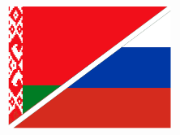
The regulations for rabies risk countries (rabies antibody test and waiting periods) will apply for Russia and Belarus from 16 September 2024.
Since there are a great many travel regulations under veterinary law, you are recommended to use the entry check dogs/cats .
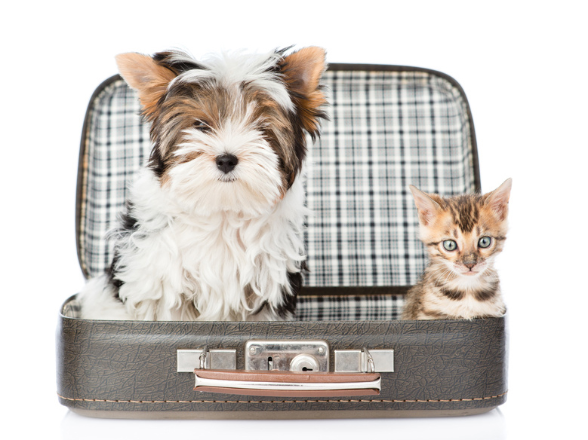
The information on these pages is intended solely for individuals with pets who do not intend to sell or give their animals to other people or institutions.
The necessary documents can be found under "More information".
Leaving Switzerland
Before they can travel, dogs, cats and ferrets need at least a pet passport, a microchip and a valid rabies vaccination. The exact requirements are determined by the country to which you are travelling. The conditions for re-entry must be met if you wish to return to Switzerland.
(Re-)entering Switzerland
General provisions.
- A maximum of five animals can be brought into the country under the "pet regulations" (see: How is 'pet' defined? ). The entry of more than five animals falls under “import for commercial purposes” ( see Import ). Exception: You can apply to the FSVO for a licence if you wish to bring more than five dogs, cats or ferrets into Switzerland from a third country (i.e. a country that is not an EU Member State, as well as other European countries and territories with a recognized pet passport) on a temporary basis to take part in competitions or similar events (see "More information").
- It is forbidden to bring dogs with docked ears and/or tails into the country (see "More information"). The current protective measures always apply.
(Re-)entering from the EU
The following is a summary of the regulations that apply when entering Switzerland from the EU with dogs, cats or ferrets.
Young animals up to 12 weeks of age:
- The animal requires a correctly completed official pet passport.
- The animal must be microchipped.
- Young animals under 12 weeks of age do not have to be vaccinated against rabies before they are brought into the country. However, they do need confirmation completed by their (new) owner that they since they were born they have not been in contact with wild animals (see under "More Informations > Forms"). This confirmation is not required if the young animals are accompanied by their mother and are still dependent on her. Puppies up to the age of eight weeks may only be brought into the country if they are accompanied by their mother.
Animals between 12 and 16 weeks of age:
- The animal must be microchipped. The implantation of the microchip must take place before the anti-rabies vaccination.
- The animal must have been vaccinated against rabies. The animal must be at least 12 weeks old before it can be given the first vaccination. There is no need for the 21-day waiting period after vaccination if the animals travel with a confirmation completed by the (new) owner that they since they were born they have not been in contact with wild animals (see under "More Informations > Forms").
Animals over 16 weeks of age:
- The animal must have either a tattoo or microchip. A tattoo is only valid if it can be proven that it was done before 3 July 2011. The implantation of the microchip must take place before the anti-rabies vaccination.
- The animal must have been vaccinated against rabies. The animal cannot enter the country until the 21-day waiting period after vaccination has elapsed. If booster vaccinations are done before they are due, the waiting period does not apply.
Exemption permits: If an animal does not comply with all the conditions for entry into Switzerland, a request for exemption (entry application 07/23) may be made. However, exemptions are only granted in special cases, e.g. for dogs and cats with a veterinary certificate stating that they cannot be vaccinated against rabies for medical reasons.
Entering from a third country
The regulations for entering Switzerland from a third country differ according to the rabies risk in the country you are coming from (cf. list of countries under " More information ").
In all cases it is vital for animals first to be marked correctly, then to be vaccinated against rabies and to be accompanied by the documents required in the specific case. More extensive requirements apply if the animal is entering from a country in which there is a risk of rabies (blood test, longer waiting times, import licence, etc.). Before you travel outside the country with an animal from Switzerland, make sure that the conditions for re-entry are fulfilled. You are otherwise likely to be refused entry at the border. The information we provide online under “ Crossing the border with dogs, cats or ferrets ” lists all the entry requirements and the necessary documents. Please refer to this information in all cases.
Entry is only permitted via the appropriately authorised points of entry and is therefore only possible by direct air transport via Basel, Geneva or Zurich airports.
Entry controls
Pets entering with their owners from third countries must be presented at the red customs exit. Customs checks animals on entry. If the animal does not comply with the entry conditions, or if the required documentation is incomplete, the animal will be taken to the border veterinary office in the freight area of the airport for further processing. This processing is only done during the regular opening hours of the respective border veterinary office. Animals arriving outside these times will be taken to the office's animal facility and not inspected until the next working day. The owner will be charged for transport to the animal facility and other expenses.
Entering by aircraft
Accompanied entry : Animals flying in the same aircraft as their owners but not in the passenger cabin must be checked in as “AVI in hold” or “excess baggage”. More information...
Unaccompanied entry : If a pet (dog, cat or ferret) cannot enter the country accompanied by its owner, it may travel as air freight. In this case different formalities apply. More information...
More Information
Legislation.
Entry check dogs/cats
List of rabies countries - status 04.2024 (PDF, 84 kB, 10.04.2024)
Questions and answers on dogs with short tails or clipped ears (PDF, 143 kB, 28.11.2023)
Entering from the EU
EU Declaration for young animals aged up to 16 weeks (PDF, 36 kB, 02.06.2016)
07/23 application form for permit to import dogs, cats and ferrets from the EU (PDF, 262 kB, 06.02.2024)
Application form for pets from a rabies risk country (DOCX, 62 kB, 11.07.2022)
Veterinary certificate and ownership declaration for entry from a third country (PDF, 494 kB, 17.10.2019)
Declaration of ownership for entry from a third country with a low rabies risk with young animals (PDF, 63 kB, 03.05.2017)
5 dogs, cats, ferrets - competitions" class="icon icon--before icon--word">Application form >5 dogs, cats, ferrets - competitions (DOCX, 101 kB, 05.06.2023)
Swiss pet passports – Information for vets:
In Switzerland, pet passports may only be issued by vets who have a cantonal professional licence or by colleagues employed in such vets’ practices. Before placing your first order, you will have to register once with the Federal Office for Buildings and Logistics by submitting an application form.
Application form shop for pet passports (in german) (PDF, 99 kB, 24.02.2022)
EU-accredited laboratories for titration of rabies antibodies
EU Member States' decision regarding the application of the derogation from the anti-rabies vaccination condition for young dogs and cats
Traveling to the EU
Swiss Rabies Centre
Points of entry for travellers as stipulated in Regulation (EU) No. 576/2013
List of swiss border control posts (PDF, 135 kB, 29.12.2022)
Contact information for EU Member States and Norway
Foreign representations in Switzerland
International veterinary authorities – addresses
Ordinance on the Import, Transit and Export of Pet Animals (IETPO)
Regulation (EU) No. 576/2013 - Non-commercial movement of pet animals
Commission Implementing regulation (EU) No 577/2013
Last modification 14.06.2024
Top of page

Before you travel – Important informations about animals, foods and souvenirs
Station Selecter
Select departure airport, language selector, swiss live animals: transport your beloved pet with the most care and support, swiss live animals header image new, swiss live animals, entrust your beloved pets and animals to our attentive care for a worry-free journey, swiss live animals content new.
SWISS Live Animals is the premium service for transporting live animals with utmost care and expertise. We understand the importance of ensuring the well-being and safety of your precious animals during their journey. With a team of trained experts and specialized facilities, we go above and beyond to provide a seamless and stress-free experience for both you and your animals. Our fast and efficient transportation options, adherence to strict regulations, and commitment to animal welfare make us the preferred choice for transporting a wide range of live animals, including hatching eggs, tropical animals, zoo animals, pets, and more. Trust SWISS Live Animals to deliver exceptional service, peace of mind, and the highest level of care for your beloved companions.
Our care. For your peace of mind
- Fast transportation: Swift transport with short acceptance, connecting, and delivery times
- Specific handling processes and facilities: Dedicated animal rooms and separate areas supervised by trained personnel for stress-free transport
- Personalized care and vet check: Individual attention and veterinary checks
- Very high access to flight capacity: Priority transportation with ample flight availability
- Ambient temperature consideration as required per species: Ensuring optimal comfort during transport
- Special loading equipment and handling: Special loading policies (last onload and fast offload)
- Compliance with regulations: Adherence to IATA and country-specific regulations for legal transport
- Product details included in NOTOC: Essential information included in flight crew's documentation
- Crew attention and adjustments: Crew monitors and adjusts temperature
What animals do we transport:
- Small mammals
- Live sea animals (e.g. live tropical fish)
- Reptiles and amphibians
- Zoo animals
- Hatching eggs
- Exotic animals
- Laboratory animals (only mice & rats)
Our hub. Ensuring optimal conditions for animal transport
- Centralized in Europe at our Hub ZRH: Our hub at Zurich airport ensures efficient transfers for live animals across our network without exposing the animals to extreme climate
- Short transit time at Zurich Hub (120min)
- Optimum environment for animal transfers: Our state-of-the-art animal center at Zurich airport prioritizes the comfort and safety of animals during transport
- Adherence to IATA regulations: Our trained experts follow IATA regulations for proper handling and care of animals
- Extensive network connectivity: Our Zurich hub offers a wide network of destinations for efficient and stress-free animal transportation
- Seamless coordination and transfers: Our experienced team ensures smooth transfers between flights
- Constant investment in improvement: We continuously invest in enhancing processes and facilities for the well-being of animals on our network
Customize your shipment to your needs
We offer scalable solutions that can be dynamically adapted to your needs. On top of our branded products, transportation solutions and add-on services can booked for your shipment.
SWISS Live Animals: Bookable transportation solutions
Swiss live animals: bookable add-ons.
- Active Tracking Devices
- Green Choice
SWISS Live Animals: Details about the product
- Booking Restrictions and Embargo
- Regulations and Documentation
Related Products
- Swiss Federal Veterinary Office (SFVO)
- IATA Regulations
- Pets in the cabin (swiss.com)
WORLD_OF_SWISS
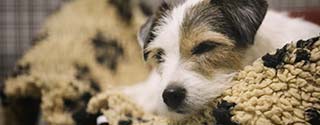
Live Animals Certificate
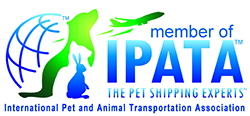
(239) 344-8959
Client Portal

- How it Works
- Cat Transport
- Corporate Pet Relocation
- Dog Transport
- International Pet Transport
- Military Pet Relocation
- US Domestic Pet Transport
- US Pet Imports
- Pet Protection Plan
- Testimonials
- Why Choose Starwood?
- Country Pet Travel Guides
- Frequently Asked Questions
- Travel Kennel Calculator
- State of Pet Travel Annual Report
- Destinations
Moving a Pet to Switzerland
Rules and regulations for international pet shipping, rabies vaccinations, blood tests, pet travel documents & requirements, health certificates, import permit, tapeworm treatment, banned breeds, age restrictions for switzerland, dog licensing.
- Microchip for Pet Travel to Switzerland
- Quarantine for Pet Travel to Switzerland
Pet Carrier Measurement Guide
Ultimate guide to moving pets, international airline pet policies, top destinations in switzerland.
- How Starwood Can Help
What Pet Travel Documents Are Needed to Travel to Switzerland?
Unlike many countries, Switzerland allows pets arriving from outside the country to travel in-cabin, as checked baggage, or as manifest cargo.
Each country around the world has their own regulations and requirements for importing pets when you move to or visit their country. These rules differ, depending on where you live now, sometimes for political reasons (such as European Union membership) but mostly due to international concerns about rabies.

Please note that the rabies vaccination for pets traveling to the EU + Switzerland must be greater than 21 days old and less than 1 year old at the time of travel. If your pet's vaccination will be over 1 year, then a new vaccine will be needed at least 21 days prior to travel.
Although other immunizations are not officially required for import to Switzerland, it is recommended that cats and dogs are vaccinated for the following. Do note that if your pet will be boarding, these vaccinations will be required.
- Dogs : DHPP (Distemper, Hepatitis, Parainfluenza, Parvovirus), Bordetella (Kennel Cough), Leptospirosis, CIV (Canine Influenza Virus)
- Cats : FVRCP (Feline Viral Rhinotracheitis, Calicivirus, Panleukopenia), Feline Leukemia
Switzerland does not require additional blood tests to import pets.
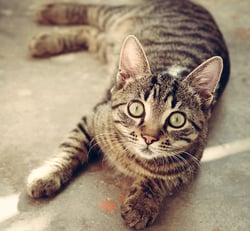
If you now live in a non-EU country, you will have to follow certain steps and obtain specific documents to bring your pet to Switzerland. You can read more details here , but the information below provides everything most pet parents need. It is most important that you follow the rules exactly. Pets who have incomplete or missing documentation can be sent back home, sent to quarantine, or in the worst case, euthanized.
If your pet will not be traveling with you, you will need to sign a consent form for the person who will accompany or be authorized to transport your pet.
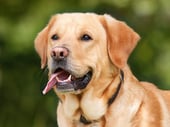
Each pet will need a non-commercial EU Veterinary Certificate for Switzerland. It must be filled out and signed by an accredited veterinarian. (Accredited by the USDA if you’re coming from the US.) The form must then be endorsed (counter-signed and stamped or embossed) by the USDA APHIS Veterinary Medical Office for your state. Switzerland will allow the accredited vet to electronically complete and sign the certificate but the USDA or government endorsement must be in original ink.
This document must be completed and endorsed within 10 days prior to your pet’s entry into Switzerland.
As long as you’re importing 5 or fewer pets, and as long as their arrival is within the 10-day window noted above, you won’t need an import permit.
Switzerland does not require tapeworm treat for pets coming into the country.
What Are the Pet Restrictions for Switzerland?
Switzerland does not allow the import of dogs whose ears or tails have been cropped or docked. That said, you may be able to get an exception ( for short stays/holidays, moving) by contacting the Federal Food Safety and Veterinary Office.
Each of Switzerland’s cantons sets its own list of dogs or cats not allowed to live in that province. You should find out what breeds are on the list where you will be living and also ask about ownership requirements for dogs.
For example, the following dogs are now allowed in Geneva – unless they are coming from outside the country, are neutered, and have never shown signs of aggression. If your dog fits these exceptions, you may bring him with you but he will have to undergo a 3-month training course upon arrival, and you may have only one dog:
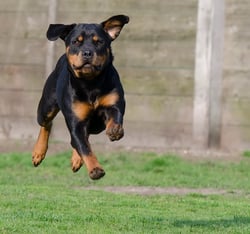
- Bullmastiff
- Dogo Argentino
- Dogue de Bordeaux
- Fila Braziliero
- Matin Espagnol
- Matin de Naples
- Presa Canario
- Thai Ridgeback
Switzerland does not allow the importation of puppies, kittens, or baby ferrets that are less than 12 weeks old and have not been vaccinated for rabies. They are also banned if they are between 12-16 weeks and were vaccinated against rabies less than 21 days prior to arriving in Switzerland.
Dogs are required to be registered in your Swiss place of residence. A veterinarian also needs to register your dog(s) in the Swiss dog database (AMICUS) within 10 days of arrival to Switzerland.
Consult your local authority regarding special requirements for permitted dog breeds and leash or muzzle laws.
Do I Need a Microchip for My Pet to Travel to Switzerland?
Every dog, cat, and ferret entering Switzerland must have a microchip that meets ISO standard 11784 or 11785. (This is a 15-digit number.) If your pet does not yet have a microchip, do that first, because it must be done prior to the rabies vaccination and health certificate. If your pet already has a microchip but it doesn’t meet ISO standards, you can:
- Bring your own chip reader for customs officials to use
- Notify Swiss customs officials in advance (so they can have the proper scanner on hand)
- Have your veterinarian implant a second, ISO-compliant microchip. This will not harm your pet. If you choose this option, both microchip ID numbers must appear on all your pet’s paperwork.
What Are the Quarantine Requirements for a Pet Traveling to Switzerland?
Switzerland does not quarantine pets upon arrival, providing they meet all the stated health requirements.
FAQs on Pet Travel
- Zürich, Switzerland
Our Top Blogs About Switzerland
Paperwork Required for Moving Overseas with a Flat Faced Cat
FAQs for Moving Your Pet Overseas
What It Takes to Move a Pet Overseas
How to Choose Your Overseas Pet Relocation Specialist
Our Switzerland pet shipping services include:
- Door-to-door transport
- Assistance with health certificates, import certificates, and other travel documents needed for animal transport to Switzerland (outlined above)
- USDA endorsement and consular legalization (when needed) of all relevant documents where required
- Airline-approved flight kennels provided with personalized labels, identification and emergency notification instructions
- Customs clearance and delivery to your home
- Local pet taxi service to and from the airport, your home, veterinarian, kennel, or groomer – available in major Switzerland cities as well as their surrounding areas
- Travel consultation and flight reservations
We will inform you of your pet's full itinerary before the trip and we will update you as your pet travels to Switzerland .
Request a FREE Quote
Search term input
- Holiday destinations
- Edelweiss Tips
- Edelweiss Options
- Partner Offers
- Flight preparation
- Baggage information
- Travel information
- At the airport
- Flight information
- Seat reservation
- Surfing & kitesurfing
- Scuba diving
Be inspired for your holidays in Las Vegas
Find out more
Choose your desired destination from over 90 holiday destinations.
- Book more baggage
- Special meal
- Travel insurance
- Luggage transport
- Car rental & transfer
- View all partner offers
- Children on journeys
- Flying with animals
- Barrier-free travel
- Free baggage
- Sports equipment
- Excess baggage
- Dangerous goods
- Corona and travelling
- Entry requirements
- Fly healthy
- Parking at Zurich Airport
- Economy Class
- Economy Max
- Business Class
- Entertainment on board
- Arrivals & departures
Regulations for the Transportation of Your Animal
When in rome....
The rules and regulations for travelling by air with animals differ from country to country. It is the passenger’s responsibility to ensure all necessary documents have been issued and authorities contacted.
Limited Transportation / Embargo
All destinations: The maximum number of animals allowed to be transported per person is two (regardless of whether the animals travel in the cabin or in hold). Dogs and cats may travel only once they have reached the age of 12 weeks. For flights from / to USA animals must have reached the age of 16 weeks. The embargoes listed below refer to travel starting from Zurich (Switzerland). If you start your journey in another country, these guidelines may differ. In this case, please inform yourself about the applicable regulations at an early stage.
- Costa Rica – For the transport of animals you need a stamp of the official authority "SENASA". Futhermore, the Veterinary Health Certificate must be filled out in advance. In San José, someone from SENASA is available at the airport every day, in Liberia only from Monday to Friday.
- England (Newquay) – An embargo on all types of animal transportation is in place.
- Iceland – There is an embargo on the transport of animals of any kind (exception: on flights from Reykjavik/Keflavik to Zurich and from Akureyri to Zurich, animals may be carried in the cargo hold).
- Ireland – An embargo on all types of animal transportation is in place (exception: on flights from Cork to Zurich, it is possible to take animals in the cabin).
- Maldives– An embargo on all types of animal transportation is in place.
- Marsa Alam (Egypt) – An embargo on all types of animal transportation is in place.
- Mauritius – Animals to Mauritius may only be transported as cargo.
- Oman – Strict vaccination requirements apply to the entry of dogs and cats.
- Scotland (Edinburgh) – All animals to Edinburgh must be booked as cargo through Extrordinair.
- Seychelles (Mahé) – An embargo on all types of animal transportation is in place.
- South Africa (Cape Town) – Animals to Cape Town may only be transported as cargo.
- Sri Lanka (Colombo) - For the transportation of cats and dogs a "Pre-Clearance Approval" is required. - Instructions
Useful Links
- IATA Traveller's Pet Corner
- Centers for Disease Control and Prevention (CDC)
- Extrordinair
Travelling in the Cabin
Only dogs and cats weighing up to a maximum of 8 kg including the pet carrier may travel in the cabin. If your pet is travelling in the cabin, it must do so in a waterproof soft container (maximum dimensions 55 x 40 x 23 cm) with adequate circulation.
The container must be closed whilst on board and your pet's head must stay within the pet container. The animal is not allowed to leave the container during your stay on board. The container must be stowed under your seat for the duration of the flight. The nature of the seats on the Airbus 340 makes this impossible in Business Class. The crew will put the transport container in the wardrobe, in an overhead locker, or under an Economy Class seat for takeoff and landing. Please note that a passenger travelling with an animal may never, for safety reasons, be seated in a bulkhead or emergency exit seat. If you want to take your pet in the cabin with you, it is essential that you book this in advance, up to 4 days before your departure, through our service center via +41848333593 .
Due to an IATA (International Air Transport Association) regulation for the transport of live animals, a confirmation is needed as from February 1, 2023 that the animal meets the requirements mentioned. Please present two copies of the fully completed and signed form at the check-in desk. This applies to all cats and dogs (including service dogs) transported in the cabin.
Transportation of Animals in the Passenger Cabin
Service Dogs
Since 01 March 2021, only trained service dogs are accepted for cabin transportation on Edelweiss flights.
Emotional support dogs are no longer classified as service dogs. We will therefore no longer accept new bookings of emotional support dogs as of this date. They may still travel as pets, in either a suitable container for transportation in the passenger cabin or in the cargo hold, depending on the size and weight, against a fee.
Service Dog
The Right Pet Carrier
Do take the greatest possible care when purchasing the suitable transport carrier for your pet. Remember that you are taking your pet out of its normal environment, and that might cause it to feel stressed. Tip: It is a good idea to try and get your pet accustomed to its carrier before you travel.
Transport Carrier in the Hold
You as the owner of the animal are responsible for paying to rent or purchase the suitable pet carrier. Transport boxes are available from the Swissport Supervisor desk in Zurich or from any good pet shop. No more than two animals, that are of comparable size and weighing 14kg or less each, may be transported in the same kennel. They must be able to stand, lie down and move in the crate.We recommend checking in at the airport at least 2 hours prior to departure.
Transportation of Fighting Dogs
We classify the following breeds of dog as fighting dogs, including crossbreeds: American Bulldog, American Bully (fundamentally prohibited due to potential snub-nosed characteristic), Caucasian Ovcharka (Caucasian Shepherd), Dogo Argentino, Karabash (Kangal Dog, Anatolian Shepherd), Rottweiler
They may only fly in the hold and in a designated transport container that meets the criteria below. This does not apply to fighting dogs aged between three and six months.
- The box may not have any plastic elements.
- The box must be made exclusively out of: wood, metal, synthetic materials, welded wire mesh and wire mesh.
- The door must have a secure lock that cannot be opened by accident. The lock must be made exclusively out of: heavy-duty wire mesh, metal or reinforced wood.
- The frame, sides, base, topside and door of the transport container must meet additional requirements. Please consult the ‘Transport container for fighting dogs’ diagram below:

Regulations for snub-nosed animals
Snub-nosed breeds of dogs and cats are particularly sensitive to temperatures and transport stress. Your pet could suffer health problems or even die during the journey. For this reason, SWISS excludes these breeds from carriage in the hold.
This restriction also applies to crossbreeds of the breeds listed above.
Privacy policy
Data protection regulation
CCPA Statement
Privacy Statement for California Residents
Do not sell my personal information
California Consumer Privacy Act of 2018
SWISS flying with pets
Are animals accepted on swiss flights.
Animals are accepted on all SWISS flights and any route , as long as the regulations in the destination country permit it. Animals are not accepted either in the cabin or as checked baggage in the following countries : the UK, Ireland, Hong Kong, Kenya, South Africa, and the United Arab Emirates. When traveling to these countries, animals may only be transported as freight.
Pets are accepted only once they have reached the age of 12 weeks .
How can I transport my pet on SWISS flights?
SWISS allows the transportation of small dogs and cats in the aircraft cabin . Also, larger dogs with an assistance or protective function (e.g. guide dogs for passengers with impaired hearing or vision) are allowed to accompany their owner in the cabin .
When the pet’s weight or the size of its container doesn’t permit it to be transported in the cabin, pets must be transported in the hold. Only dogs and cats can be transported as checked baggage .
What documents do I need to travel with my pet?
Depending on the country of destination, different rules and regulations apply for traveling with animals by air . You should book your travel in plenty of time and present your pet’s documents, which include health and vaccination certificates and import, export, and transit papers. If your animal has not had the required vaccinations and is not allowed to enter a country, then you must pay for the return flights.
Pets in the Cabin
SWISS will transport in the cabin only dogs and cats weighing up to 8 kg . The maximum weight includes the transport container, which must be a soft container , clean, escape-proof, and scratch-proof. There must be enough space for the animal in the container, but its size must not exceed 55 x 40 x 23 cm .
To be allowed in the cabin, the pet must be clean and healthy and must not smell. It must not be pregnant or dangerous or annoy any of the passengers.
For the duration of the flight, the pet must remain fully in the container, and the container under your seat. Due to the nature of the seats, the container cannot be stored under the seat in Business or First Class on Airbus A330 , Airbus A340 , and Boeing B777 aircraft (except in the last row) .
Pets as Checked Baggage
Pets must be transported in the hold when the weight, including the transport container, exceeds 8 kg and/or the container is bigger than 55 x 40 x 23 cm (the permitted size for transportation in the cabin). The pet must be clean and healthy and must not smell. It must not be pregnant or dangerous. SWISS recommends passengers traveling with pets as checked baggage to be at the check-in counter 1 hour before the check-in deadline .
In the hold, pets must travel in a suitable container or crate with enough food and water for the duration of the journey. SWISS adheres to IATA Live Animals Regulations, the global standard for transporting animals by air. Conditions, appearance, and minimum sizes of transport containers must comply with IATA requirements. The IATA “Live Animals” label must be attached to the container.
Fees for Transporting Pets
Animals are not included in the free baggage allowance and are always charged as excess baggage . The fees for transporting animals vary depending on route:
Assistance Dogs
T he transport of certified Assistance Dogs in the cabin is free of charge . You must inform SWISS when making your reservation that you intend to travel with an Assistance Dog. There are no size or weight restrictions for Assistance Dogs , and they are not required to travel in a container .
Emotional support dogs are no longer accepted free of charge , but only as pets, on SWISS flights to/from the US.
More information here >>
- Covid Rules
- Baggage & carry-on
SWISS seating maps
- Airbus A220 300
- Airbus A319 112
- Airbus A320 200
- Airbus A321 100/200
- Airbus A330 300
- Airbus A340 300
- Boeing B777 300ER
- Bombardier CS100
Recent Travel Tips
Top airlines.
- Delta Airlines
- Turkish Airlines
- United Airlines
As featured on

20 best zoos and animal parks in Switzerland
Today I have an article for you, which could also be called “from readers to readers” 🙂. Just to explain: during the time we have been living in Switzerland we have visited several zoos and animal parks, where not only children but also we adults have enjoyed ourselves. But of course, we haven’t managed to visit all of them yet. And yet, I had planned to write an article about the best trips to see the animals in Switzerland. That’s why I asked my readers on Facebook if they would be kind enough to send us tips on places we hadn’t been to yet (and ideally with photos). And what followed was something absolutely incredible. Within a couple of hours, I received dozens of beautiful photos from zoos and animal parks from probably all over Switzerland, for which I thank from the bottom of my heart. And so, thanks to my readers, I have this article for you – the list of 20 best zoos and animal parks in Switzerland!
To help you see if there’s a zoo or animal park near you where you can enjoy a great day out, I’ve prepared an easy-to-view map with all 20 parks listed below.
1. Tierpark Dählhölzli, Bern
Tierparkweg 1, 3005 Bern
Tierpark Bern is more of a nature park, a forest just outside the city center, where you will find mostly European animals with a few exceptions. Tierpark Bern includes not only the Dählhölzli Zoo but also the famous Bärenpark at Nygeggbrücke almost in the city center. From the zoo, it’s about a 45-minute walk along the river.
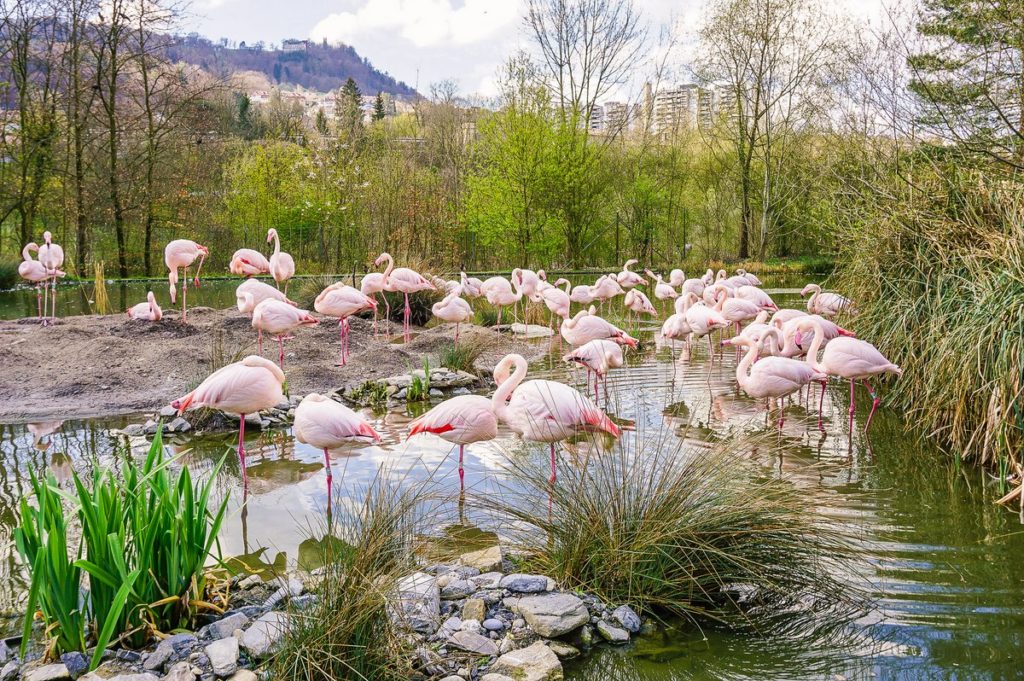
2. ZOO Zolli Basel
Binningerstrasse 40, 4054 Basel
A small but cosy zoo right in the heart of Basel. The main “highlight” of our visit was definitely the visit to the monkey pavilion with chimpanzees, orangutans, gorillas and other species.
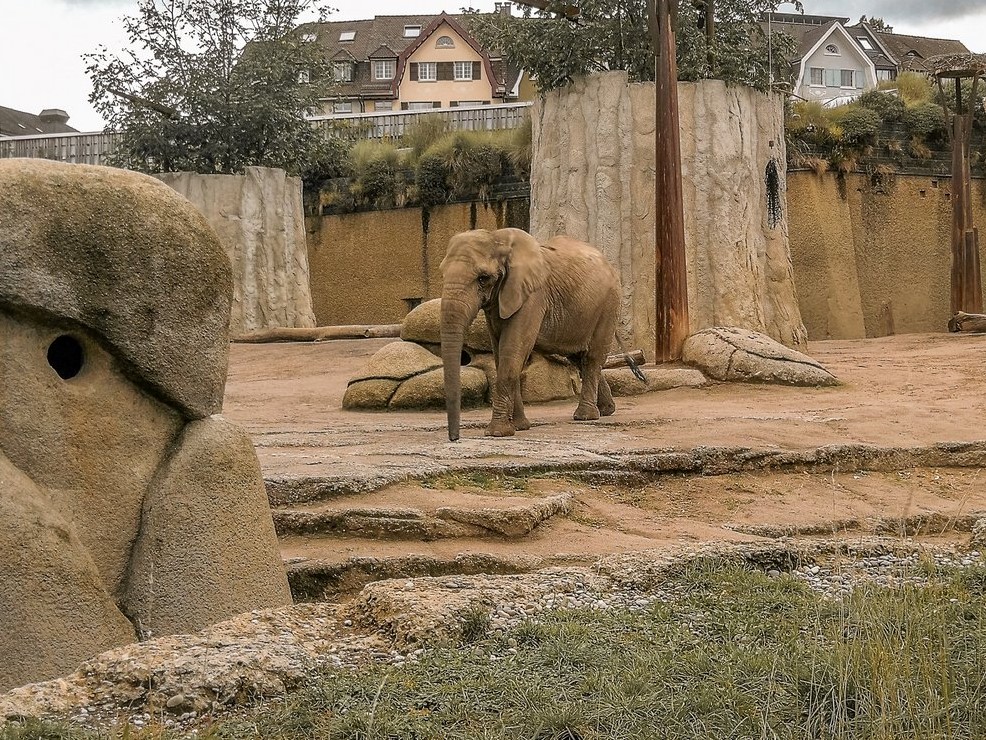
3. Tierpark Langenthal
4900 Langenthal (Schützenstrasse).
To the east of the town centre, on the Hinterberg hill, there is a mini-zoo or wildlife preserve. Around 80 animals live in large free-range enclosures on an area of 30,000 square metres. Visitors can observe fallow deer, sika deer and wild boar, dwarf goats, donkeys and ponies in the wild.
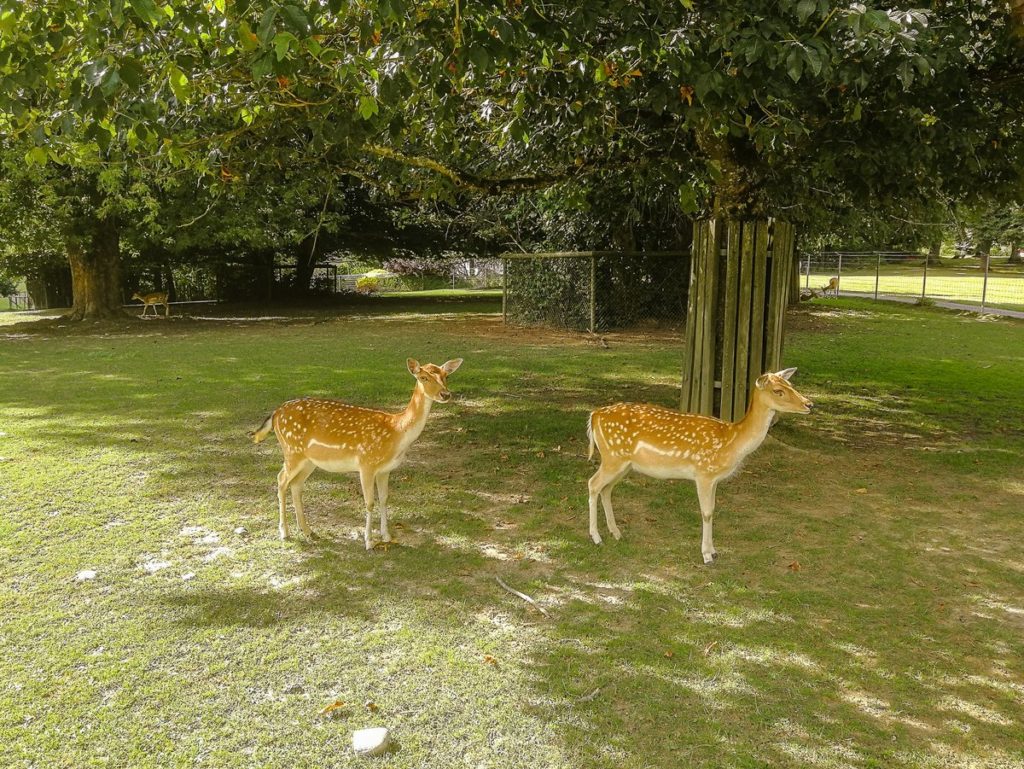
4. Johns Kleine Farm Kallnach
Krosenrain 12, 3283 Kallnach
A place where you can pet a llama, camel, donkeys, sheep or goats – and what’s more! You can even follow them into the pen! – this is Johns kleine farm in Kallnach near Aarberg.
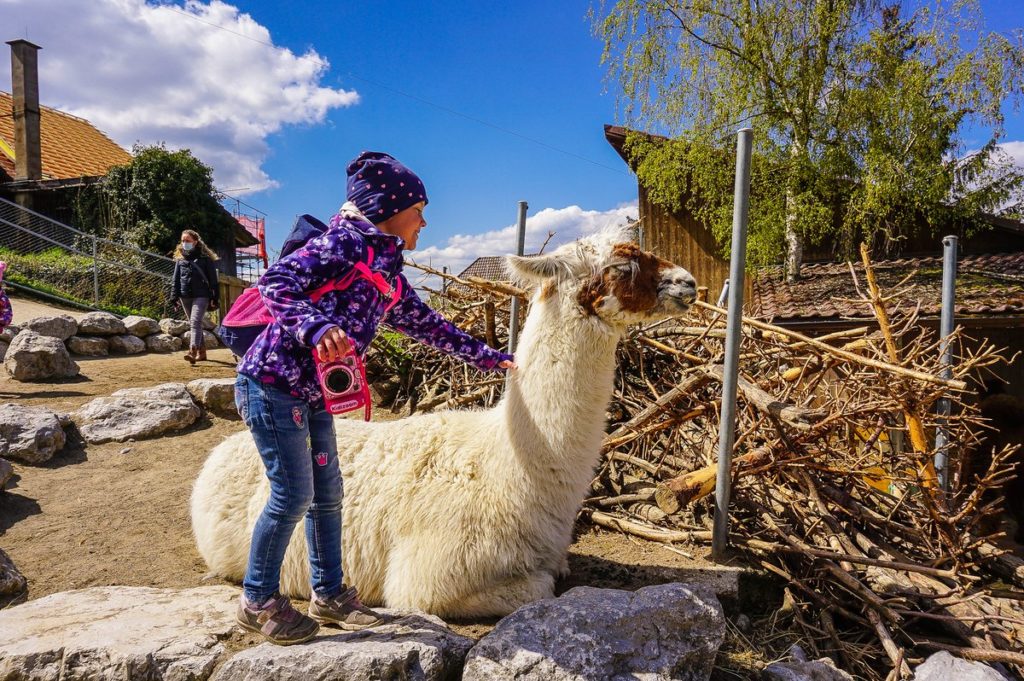
5. Storchenkolonie Altreu
Eichackerweg 10, 2545 Selzach
Not far from Solothurn is the village of Altreu, which is famous for its unique heron colony. Here you can observe more than thirty pairs of white storks, which raise their young here every year in their natural habitat.
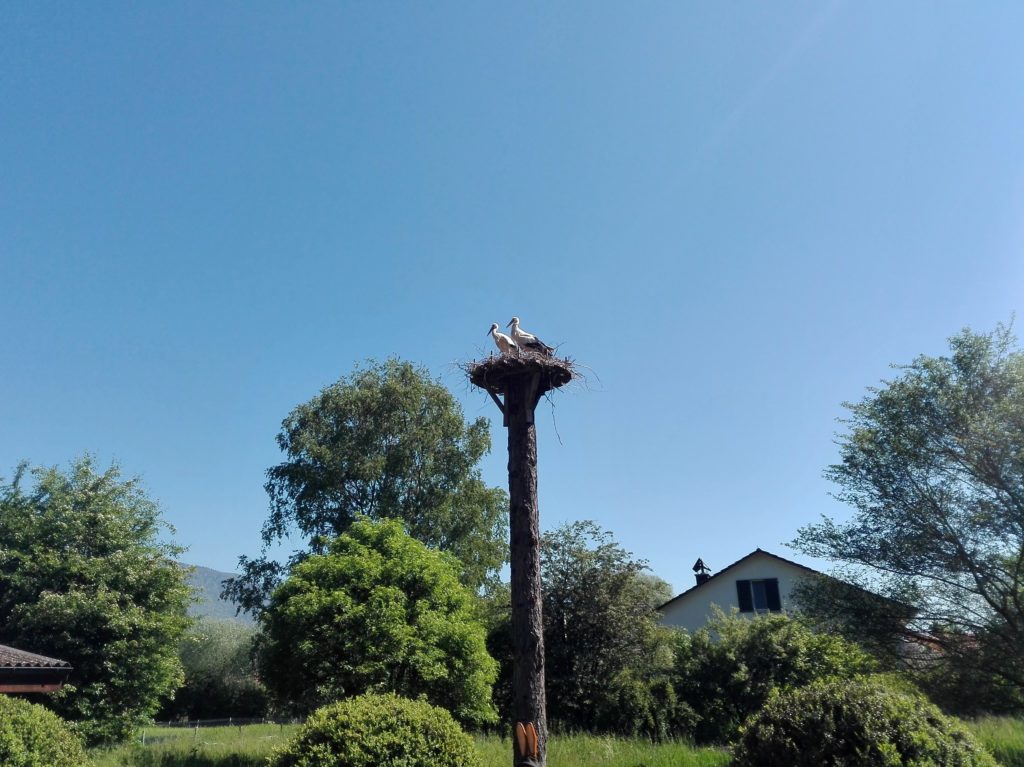
6. Papiliorama Kerzers
Moosmatte 1, 3210 Kerzers
The complex is divided into several parts, the main attraction is the Papiliorama pavilion with tropical butterflies. Here you can see up to 60 species of tropical butterflies. You can also take a walk in the Nocturama night pavilion, dedicated to animals active at night, or take the Jungle trek – a Central American jungle.
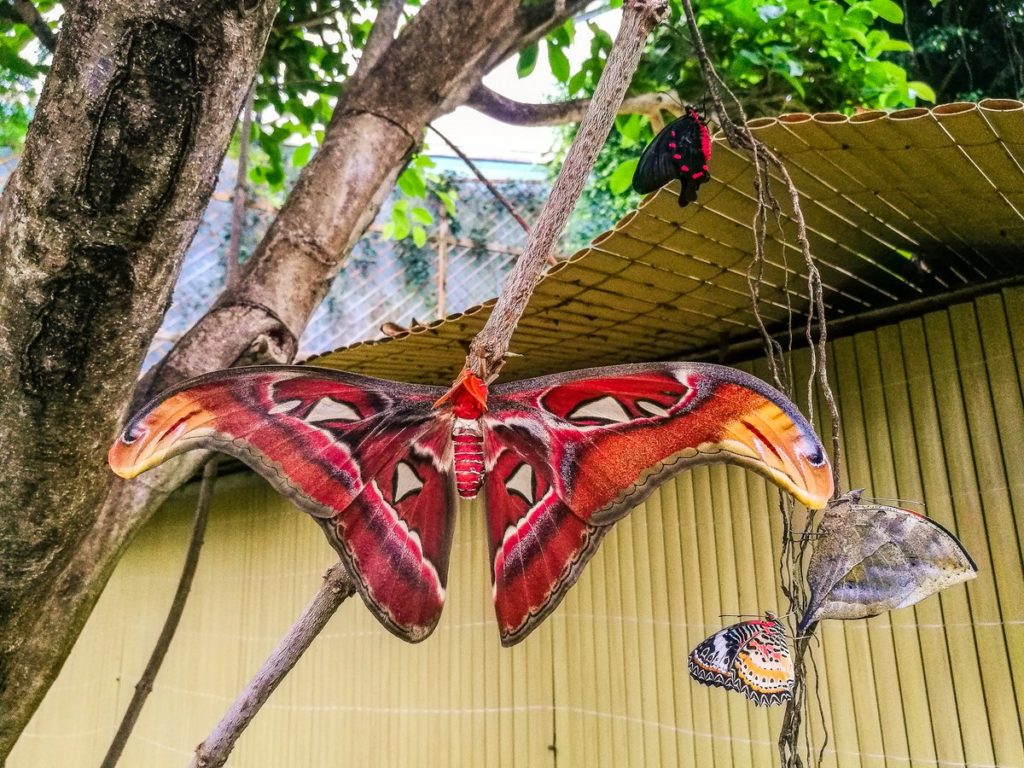
7. AQUATIS Aquarium-Vivarium Lausanne
Route de Berne 144, 1010 Lausanne
Aquatis is the largest freshwater aquarium in Europe. It is an interesting mixture of aquarium and educational modern museum.

8. Tierpark Biel
Zollhausstrasse 103, 2504 Biel
The hike through the Taubenloch gorge ends on the outskirts of Biel. In the forest park on the Bözingenberg hill (admission is free), you will find marmots, chamois, wild boar, deer, snowy owl, or dwarf goats.
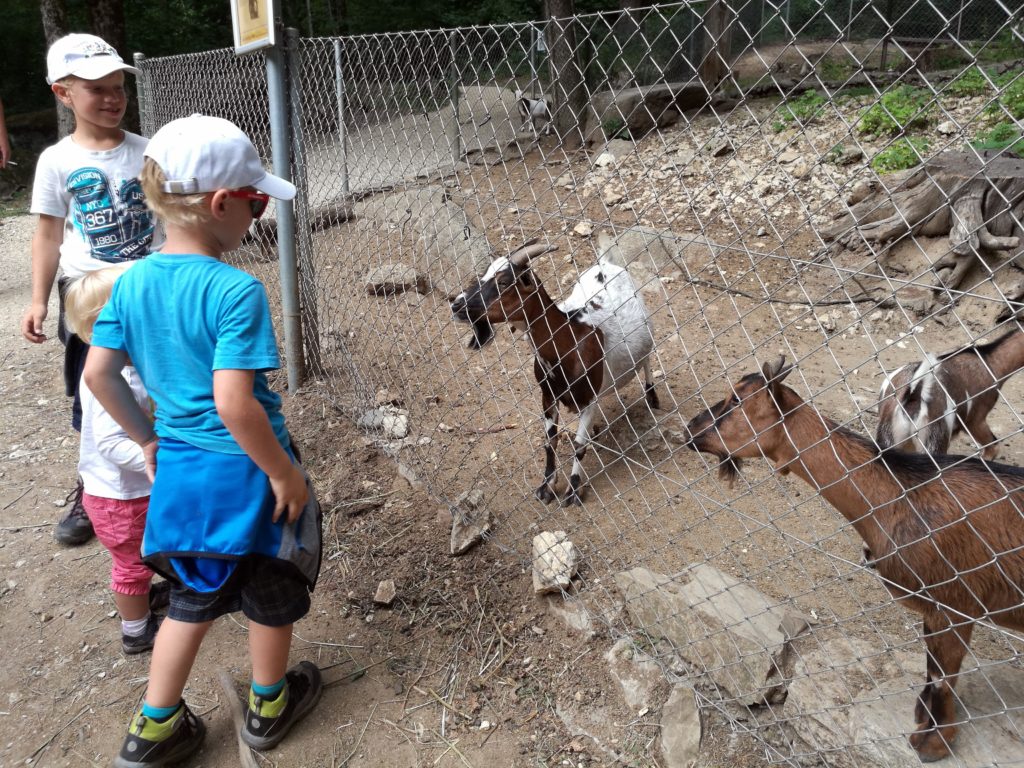

9. ZOO Zürich
Zürichbergstrasse 221, 8044 Zürich
Opened in 1929, the zoo offers visitors 380 species of animals in natural exhibits such as Australia, Masoala Rainforest and Kaeng Krachan Elephant Park. Reader Petra recommends this section in particular, especially at times when the elephants are bathing.

10. Knie’s Kinderzoo, Rapperswil
Oberseestrasse 36, 8640 Rapperswil-Jona
This is where the animals of the Swiss National Circus Knie spend the winter months while the circus takes a break from touring. Giraffes, elephants, camels, cheetahs and sea lions are the attractions of this zoo, which reviews say you can walk through in an hour. Kids can pet and feed the animals, as well as ride a camel or elephant.
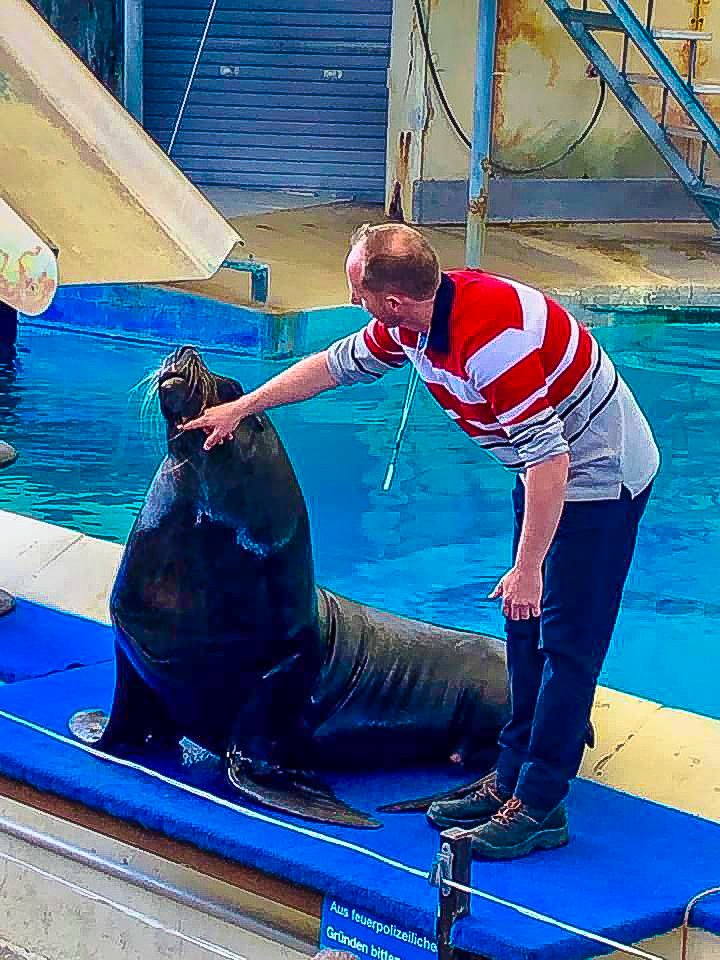
11. Natur- und Tierpark Goldau
Parkstrasse 40, 6410 Goldau
The Natur- und Tierpark Goldau in the picturesque mountain landscape is one of six scientifically managed zoos in Switzerland. It is located in an area that was devastated by the Goldau landslide in 1806. The 42-hectare park is home to more than 100 native and European animal species.
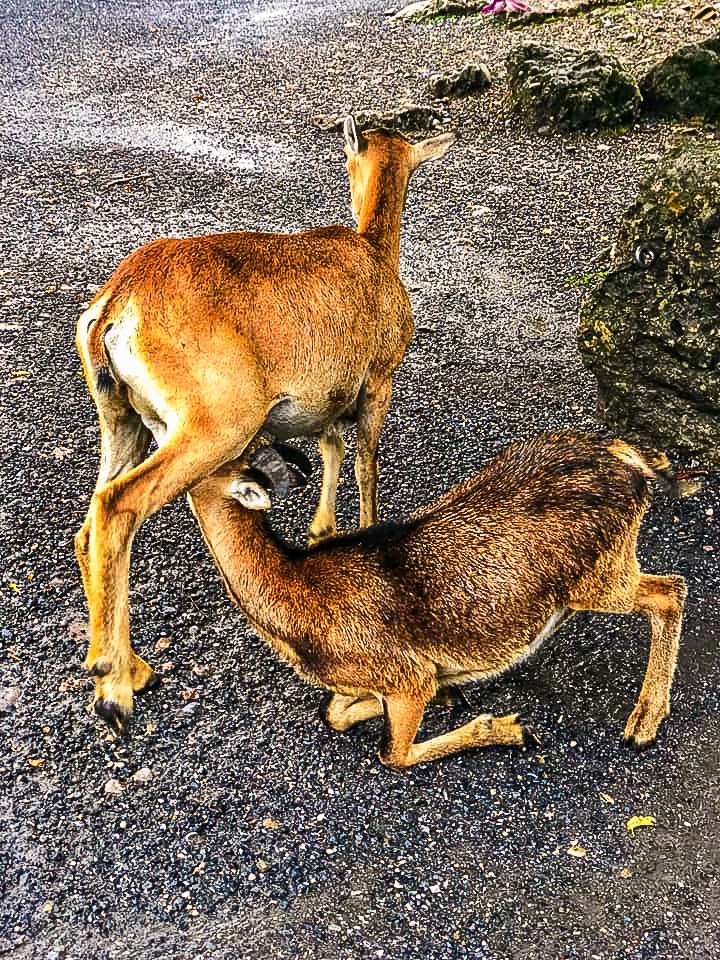
12. Walter Zoo, Gossau
Neuchlen 200, 9200 Gossau
This zoo in the canton of Sankt Gallen is the largest zoo in eastern Switzerland with more than 900 animals from around 130 different species from all over the world. You can see the animals up close and children can ride camels and ponies.
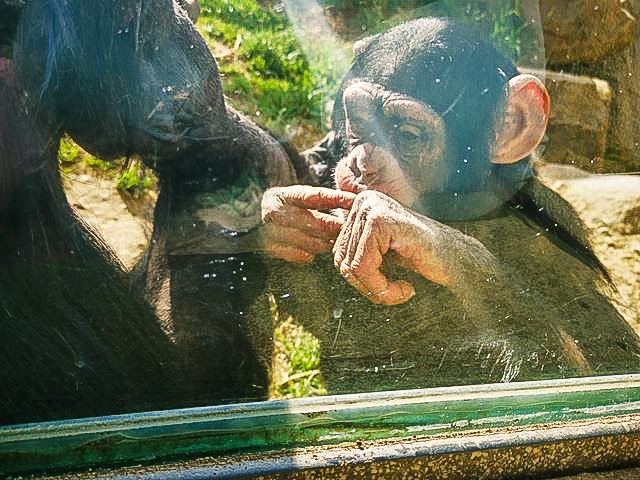
13. Zoo du Bois du Petit-Château, La Chaux-de-Fonds
Rue Alexis-Marie-Piaget 82, 2300 La Chaux-de-Fonds
Renata recommends visiting the park in the summer season, where you can use the children’s paddling pool and there is also a picnic area. Admission is free, unfortunately the cafe is under renovation for now.
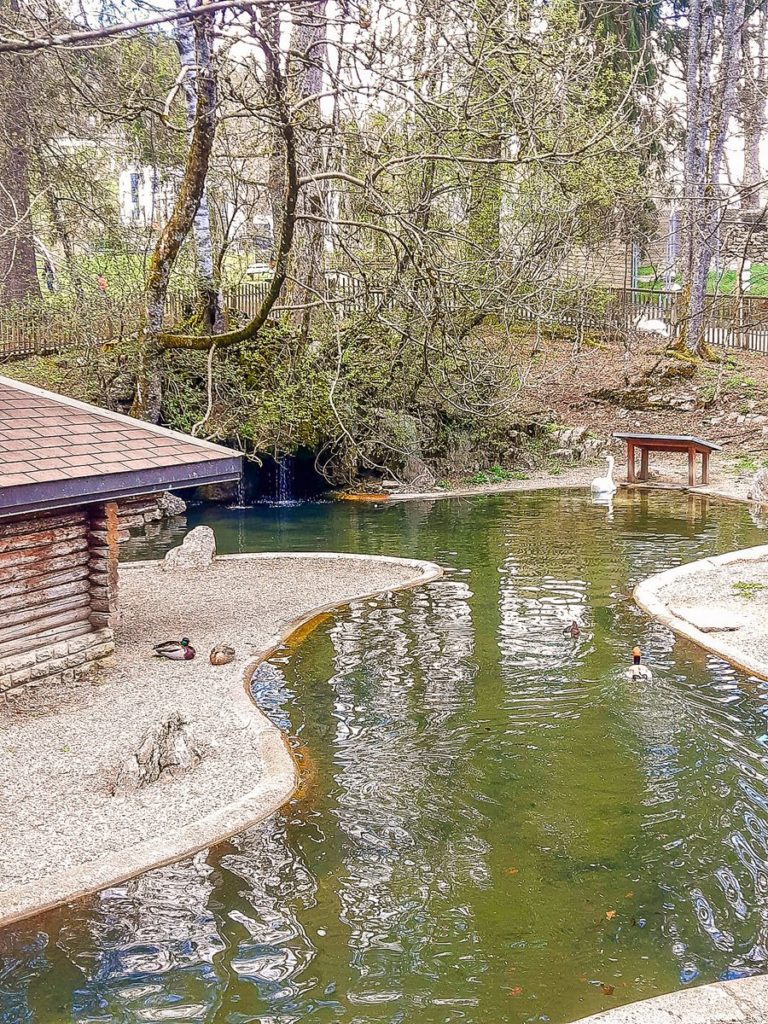
14. ZOO Hasel
Hasel 115, 5236 Remigen
Reader Lucie recommends this zoo. Even though it’s tiny, it’s still interesting for children because most of the animals can be fed from your hand.
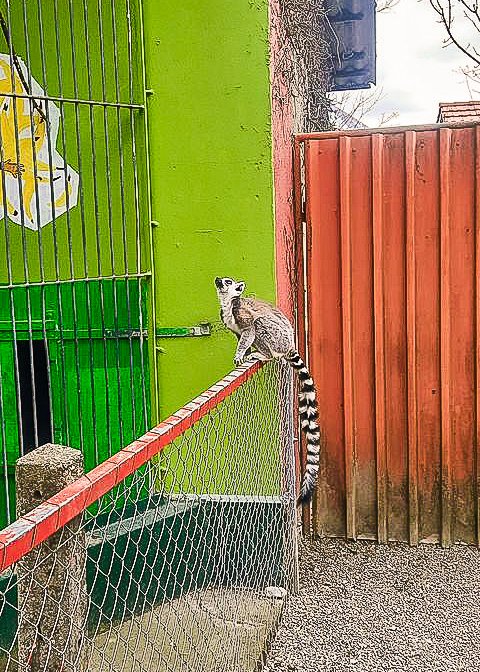
15. Zoo et piscine des Marécottes
Les Combasses 3, 1923 Marécottes
Tereza is going there with her children – as soon as she visits, she will definitely send some photos 🙂 You should definitely go there too because it is the highest zoo in Europe (located at an altitude of 1100 meters) and covers an area of 35 000 m2. Here you will get close to bears, lynx, foxes, deer or marmots, and many other representatives of the 150 species that live or have lived in the Alps in an authentic environment.
16. Wildpark Brienz
Talstrasse 57, 3855 Brienz
Another Tereza, recommends this small animal park, where they have a few animals, but anyone who likes ibex will love it there.
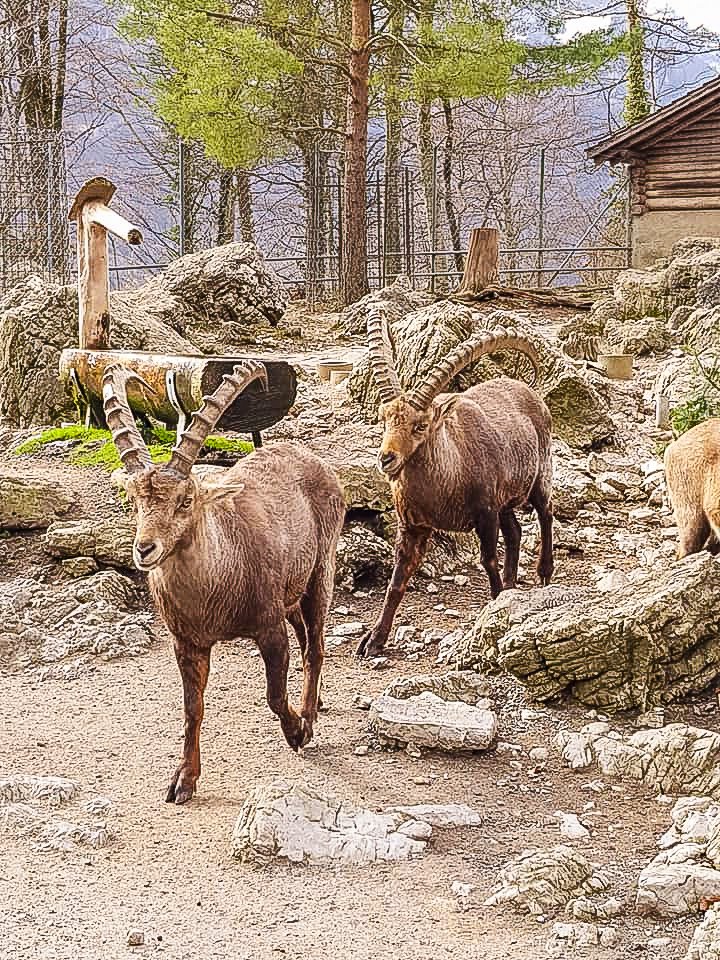
17. Wildnispark Zürich Langenberg
8135 Langnau am Albis
This is said to be a wonderful park for families living in the Zurich area. Admission is free.
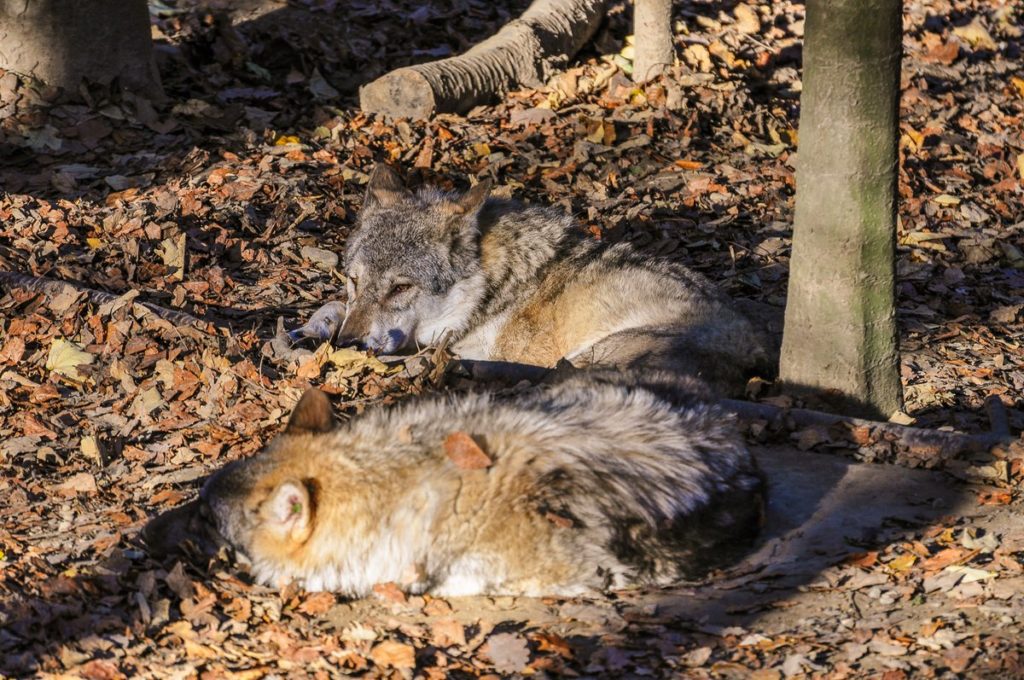
18. Servion Zoo & Tropiquarium
Route des Cullayes 7, 1077 Servion
As the name suggests, Tropiquarium is dedicated to tropical flora and fauna and specializes in the conservation of endangered species such as Cape penguins, giant Galapagos tortoises, Siamese crocodiles, and the stars of the park: the Komodo dragons. In the adjacent zoo, you will see wolves, bears, and kangaroos.
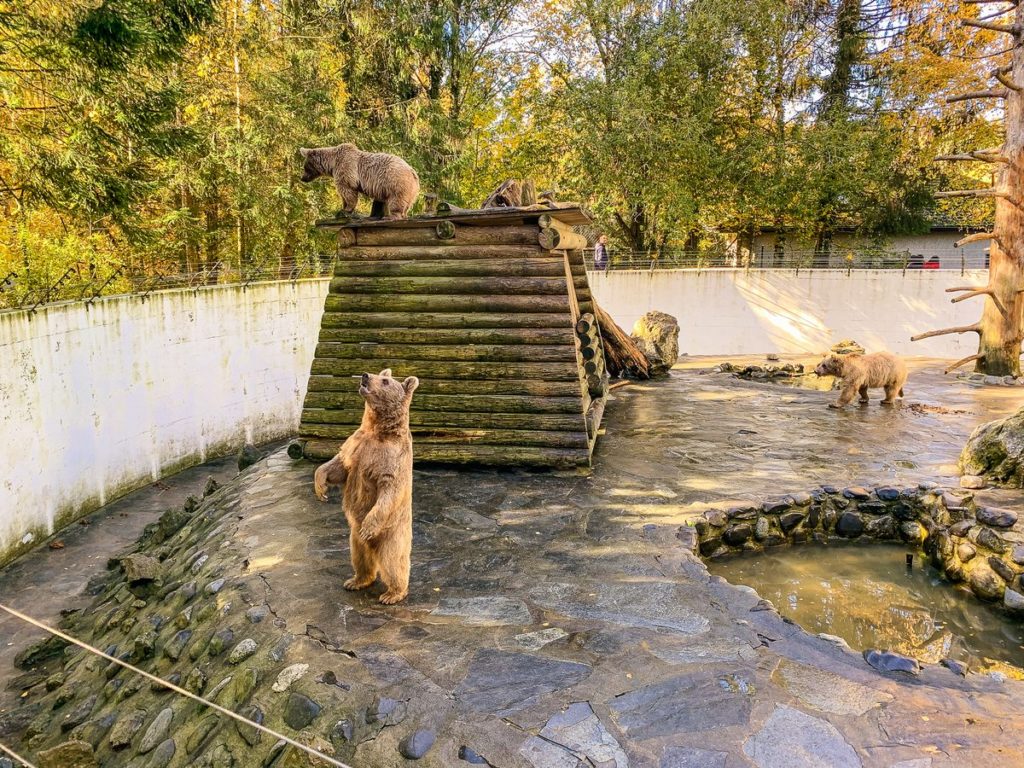
19. Wildpark Peter und Paul, St. Gallen
Kirchlistrasse 92, 9010 St. Gallen
The Peter und Paul Wildpark is located in St. Gallen, and the park’s various sites offer beautiful views of the Thurgau canton, Lake Constance, southern Germany, Vorarlberg, and Alpstein. In their natural habitat, you can see red deer, sika deer, fallow deer, chamois, ibex, marmots, wild boar, lynx, and wild cats. The dominant feature of the game preserve is the ibex rocks, as you can see in the photos by Lucie. The paths in the Wildpark are wheelchair accessible and admission is free.
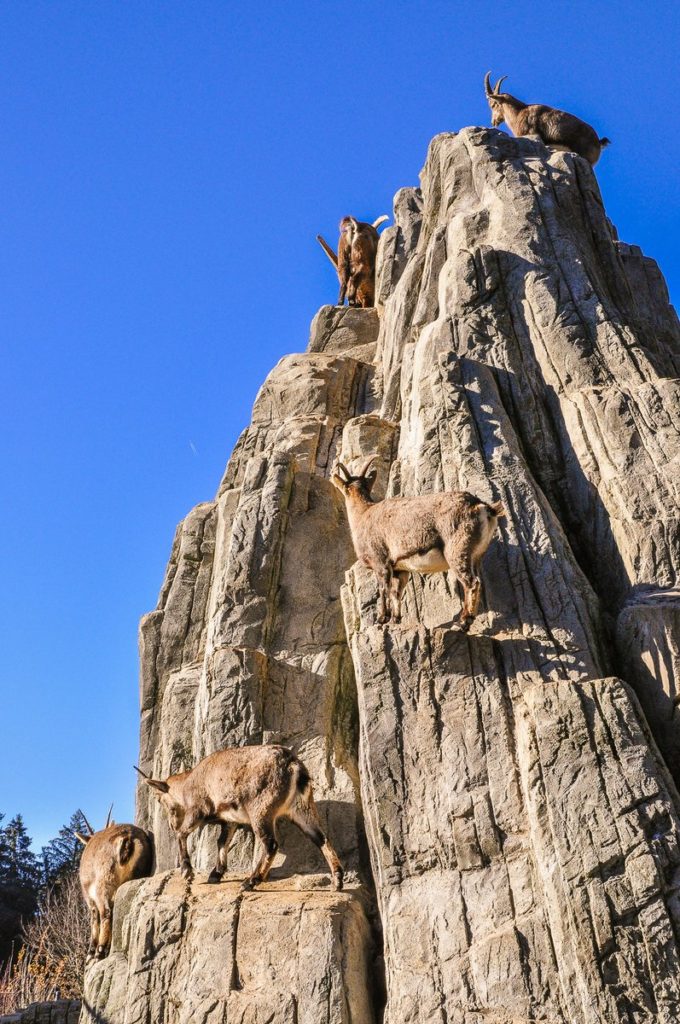
20. Wildpark Bruderhaus Winterthur
Bruderhausstrasse 1, 8400 Winterthur
Founded in 1890, the Wildpark Bruderhaus is home to 80 animals of eight species. Admission is free and you can see lynx, wolves, moufflons or Przewalski’s horses.
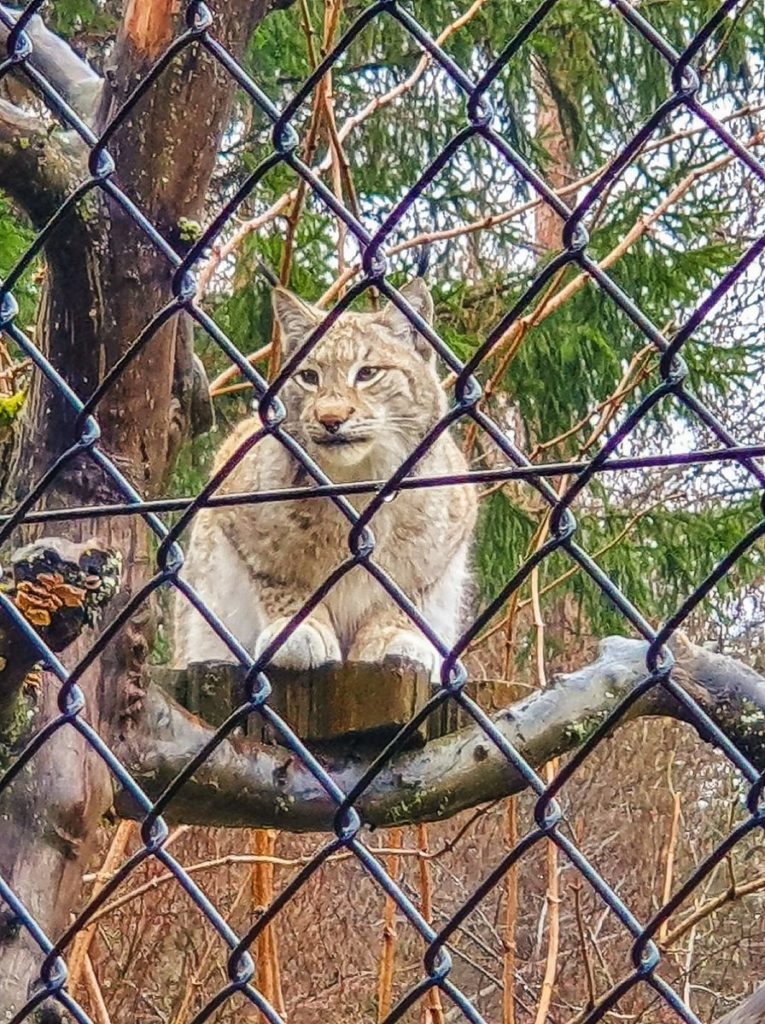
Once again I would like to thank everyone who contributed to this article with their tips, comments and photos

Leave a Reply Cancel reply
Your email address will not be published. Required fields are marked *
Post Comment

3 vine theme trails in western Switzerland you should hike
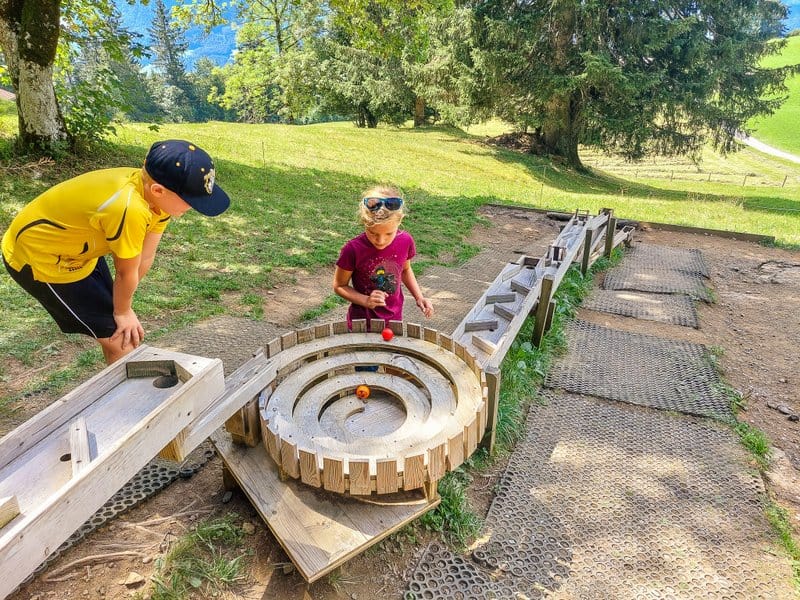
Hiking with kids: Marble Run Trail Hasliberg

Lago Maggiore – Brissago Islands

I am a member of

Map of activites

You may be also interested in
Hiking with kids: the Pilouvi-Schlucht gorge and waterfalls
A weekend in Liechtenstein: the perfect balance between city and countryside getaway
Esterliturm Lenzburg: an extraordinary lookout tower made of concrete tubes
Teufelsschlucht: a family walk through Devil’s Gorge
The 8 most overrated spots in Switzerland
Zugerberg: Zugiblubbi Theme Trail
Fall season highlight: the Jucker Farm Pumpking Exhibition
Hiking with kids: Wasserfallen ridge hike
Hiking with kids: Dwarf trail Hasliberg (Muggestutzweg)
Social Media
- Book reviews
- Canton Bern
- Chocolate factory
- Family activities
- Indoor activities
- Lookout tower
- Map of activities
- Show cheese dairy
- Suspension bridge
- Swiss Travel Tips
- Switzerland
- The best of canton Bern
- Theme trails
- Travel tips
- winter hiking
- with stroller
Wildlife In Switzerland: 9 Animals To See in the Swiss Alps

Hiking in Switzerland will reward you with breathtaking views of the soaring Alps, verdant valleys, and glacial lakes. Thanks to conservation policies, your trek across the countryside will also give you the opportunity to spot the Alpine country’s unique and fascinating wildlife.
Like most countries in Europe, the wildlife population in Switzerland began to dwindle between the 17th and 19th centuries. The intrusion of civilization, hunting, and loss of habitat forced the decline of animal populations to well below historical levels. Animals such as wolves and bears were even declared extinct for over a century.
Today, the wildlife population in Switzerland has rebounded. Some species reentered the country from Italy and others were reintroduced by conservationists. Their efforts allow the people of Switzerland and its visitors to get a glimpse of the following animals. Some can be spotted all year while others are only out in the warmer months.
Table of Contents
Golden Eagle

A remarkable creature with a wingspan of over 2 meters, the Golden Eagle is called the “King of the Air” as it dominates the skies over the Alps. The huge birds are extremely territorial and feed on marmots in winter and summer and ungulate carcasses in winter.
Golden Eagles were once very common in all of Central Europe. They were hunted to a near extension during the 19th and 20th centuries but managed to survive in small numbers. The government intervened and saved the rare birds from total extinction . The population has now recovered and the Swiss Ornithological Society reports that the country has about 300 pairs of golden eagles.
You can spot the golden eagle in the wild by recognizing its wide wing span and dark brown color with a sheen of gold on the back of the head and neck. The younger birds have patches of white on the wings and at the base of the tail. You’ll also find six pairs of them living in the national parks of Switzerland .
Related Reading
Best national & nature parks in switzerland, mountain hare.

The mountain hare is a species of hare unlike the ones commonly found. It’s more of an alpine animal with characteristics adapted to mountainous and polar habitats such as a stocky build, small ears, and broad hind legs. Their forearms and smaller and close together. Its grey fur turns white in winter to help camouflage it from predators.
Tourism and the construction of ski resorts have pushed the mountain hare into habitats that they aren’t native to such as the plains and forests. They’re rarely seen in the Alps in winter since their white coats blend in with the snow.
On winter hikes in the Swiss national parks, you may detect the tracks of the mountain hare.
Bearded Vulture

One of the rarest raptors in Central Europe, the bearded vulture can be recognized by its wide wingspan (around 3 meters), white or reddish-yellow plumage on the breast and head, and greyish-black wings and tail. As adults, they have bristles at the base of the beak that resembles a beard.
The huge birds are exclusive to the high mountainous areas of Switzerland and nest on lofty rock ledges. It’s called a Lämmergeier colloquially which translates to “lamb vulture.” With a reputation as a ferocious killer of livestock and even small children, the birds were hunted to near extinction in the 19th century. In the latter part of the 20th century, conservationists reintroduced them to the Swiss National Park where you may spot them soaring overhead, especially during the breeding season.

Since the wolf and lynx had almost completely disappeared, the fox is now the largest predator found in the Swiss National Park. They have adapted well and are commonly found in the region. They feed on marmots, small rodents, ungulate carcasses, and worms.
Foxes live in family groups and dwell in earthen dens, often using the dens of other animals where they may exist for generations. Females and males and their older young take care of the pups until the first fall of the year after their birth, and sometimes even longer.
Foxes are nocturnal animals, but it’s possible to see them early in the morning while the parents watch their pups play before tucking them in.
The Return of Wolves in Switzerland: A Look at the Impact and Controversy

An endangered species in Switzerland, the brown bear is now making a comeback—an amazing feat since it was totally extinct for close to a century after the last one was shot and killed in 1904. According to the conservation organization KORA, discussions began almost immediately on ways to bring brown bears back.
Soon after, conservationists launched a program to reintroduce the brown bear to Switzerland, but their efforts were unsuccessful. It wasn’t until early 2017 when the canton of Bern, which uses the brown bear as a symbol, was thrilled to report a wild bear roaming through the countryside. Efforts to reintroduce them into Italy’s Adamello-Brenta Nature Park at the beginning of the millennium paid off and one of the bears migrated to Switzerland.
Bears In Switzerland: They are Back, But Still A Problem

Switzerland’s largest hoofed animal, the red deer is another animal driven to extinction in the 19th century because of overhunting. In turn, their extinction of migrating predators. After hunting the red deer was outlawed by the government, they began migrating to Switzerland from Austria where there were no natural predators.
Today, nearly 35,000 red deer roam the Swiss Alps and the national parks. You’ll recognize them by their reddish coats, impressive antlers, and distinctive mating calls.
Alpine Ibex
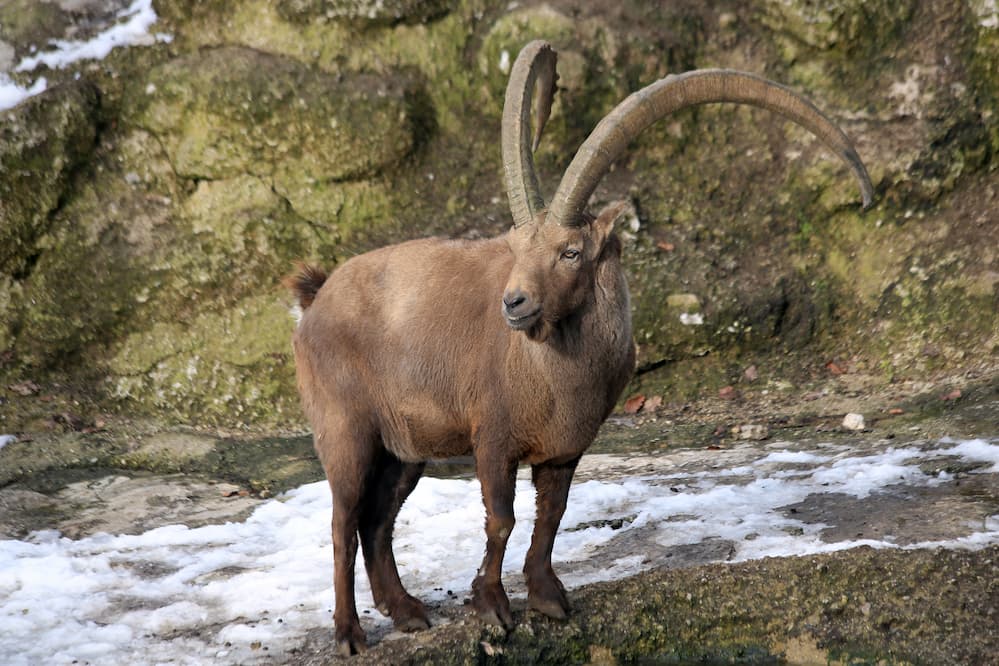
Sure-footed and an extremely agile climber, the alpine ibex is an unusual-looking animal with one-meter-long curving scimitar-like horns on both sides of the head. The horns typically grow in length a few centimeters every year. Although heavy—as much as 90 kilograms—they are graceful and have a great sense of balance.
These beautiful creatures completely disappeared from the wild almost 200 years ago. In the early 20th century, three ibex were reintroduced to Switzerland after being stolen from Italy. Today, with around 40,000 of them, the ibex is ubiquitous in the mountains and plains of Switzerland.
A good place to spot ibex is in Switzerland’s Upper Val de Bagnes Nature Reserve . Look for them in wild and rocky areas where they like to stay away from predators.

The Chamois is a graceful, horned animal with hoofs that developed a gripping ability to help them scamper over steep cliffs from rock to rock. They are excellent climbers but very skittish so it’s difficult for even expert climbers and hikers to spot them. Adding to that is the sad fact that their numbers are declining through a combination of overhunting, disease, and the disturbance of their natural habitat by climbers and skiers. They’re also being forced to higher altitudes due to climate change.
Throughout the year, female chamois live with their young in a herd while the male tends to live in solitary.

The largest species of the Sciuridae (squirrel family), the Marmot is found in the high Swiss Alps at 762 to 3048 meters. They have a distinct rodent-like look with large front teeth and a thick fur coat. Excellent diggers, they live in burrows deep underground to stay away from danger.
Marmots are family-oriented animals with male and female parents caring for several offspring. They recognized each other through scent glands in the cheeks, and social contact is important to them.
It’s easy to spot the frolicking marmots, and they can often be seen scurrying around the mountain slopes. Since they hibernate in winter, they’re more active in the warmer months. Their body functions drastically slow down during hibernation.
Along with the ibex, the marmot has become a part of the Swiss culture, and bronze statues of frolicking marmots along with a life-sized bronze ibex are the focal points of the Matterhorn Museum in Zermatt .
Dangerous Animals in Switzerland
The majority of the animals in Switzerland are not very dangerous. For example, the Ibex, chamois, eagle, vulture, marmot and deer are hardly going to eat you alive.
However, in more recent years, some more dangerous animals have been making a comeback. Animals such as the brown bear and wolf can now be found in the alps and can be considered dangerous. Especially the brown bear, which can be unpredictable when surprised or cornered.
There are also wild boar in some forests and farming areas in Switzerland, although the numbers are not huge. They are mainly found in the Jura, Valais and Ticino and are mostly seen at night.
Another dangerous animal in Switzerland is the European Viper. I have only seen one in all my years in Switzerland, and that was high in the Alps basking in the sun near St Moritz.
The numbers of these more dangerous animals are small, so don’t be afraid to head out into the alps for a hike!
Wildlife in Switzerland – FAQ

Are there wolves in the Swiss Alps?
Yes. According to the group Wolf Switzerland, over 250 packs live in Europe’s Alpine region. Wolf cubs have been seen in eastern Switzerland. The wolf is a protected species under current law, and can only be slaughtered after killing a certain amount of livestock.
Are there snakes in Switzerland?
Yes, the asp viper and the common adder can be found in Switzerland. Both are venomous snakes. The nonvenomous Aesculapian snake also resides in Switzerland.
What is the national animal in Switzerland?
Currently, Switzerland has no national animal. However, several have been used as symbols over the years including the cow, marmot, ibex, blackbird, and St. Bernard.
What is the main animal in Switzerland?
The main animal you will see when you are in Switzerland is the humble cow. Switzerland has around 1.4 million cows, so you will see them almost everywhere you go in the Swiss Alps and beyond.
Are tourists permitted to hunt birds and wild animals in the Swiss Alps?
No, tourists aren’t allowed to hunt birds and wild animals.
When is the best time to see wild animals in Switzerland?
The best time to see wild animals in Switzerland is in the drier months between May and September when the snow has melted in the lower regions.
Leave a Reply Cancel reply
Your email address will not be published. Required fields are marked *
Get Our Free Swiss Tips Guide
Popular destinations, important pages, on social media, travel planning, certified swiss travel expert.

Navigate at sbb.ch
- To contents
Service links
- Search Open Search term Search
English is currently selected as the language.

Fascinating animals – Swiss zoos and animal parks.
Elephants, emus, and eagles: enjoy observing exotic and native animals in Swiss zoos and animal parks. Learn about their habitats and enjoy a wonderful time together. Click here to go to our wildly good deals.
Find the experience for you here.
Highlights..

Falconeria Locarno.
Be carried away by the fascinating world of birds of prey at Falconeria Locarno.
Up to – 10% Discount

Sikypark – the Swiss Animal Rescue Park.
- Family excursions
- Zoos & animal parks
From indigenous animals to more exotic species, at Sikypark you can approach the animals in a way that is not usually possible, in the heart of the open countryside.
Up to – 20% Discount

Nature and Animal Park Goldau.
- Group excursions
Visit the Nature and Animal Park Goldau and marvel at the bears and wolves living side by side in the same enclosure.

Discounted admission to Basel Zoo: an oasis in the city for 150 years.
Welcome to the city oasis of Basel. In 2024, Basel Zoo celebrates its 150-year anniversary.

Marécottes zoo and pool.
- Games & fun
The Marécottes zoo park is a trip destination that is instructive and entertaining.

Bern Animal Park.
From puffins to crocodiles, you’ll experience a fascinating diversity of species at Bern Animal Park.
Popular topics.
- Mountains and nature
- Fun and games
- Hiking and exercise
- Sightseeing and exhibitions
- RailAway hits
9 leisure offers.

Walter Zoo Gossau.
Experience the world of exotic animals at close quarters at Walter Zoo Gossau.
20% discount

Zurich Zoo.
At Zurich Zoo, you can experience a piece of Africa in the Lewa Savannah and discover the tropical rainforest of Madagascar in the Masoala Hall.
Top promo Up to – 30% Discount

Sea Life Konstanz.
- School excursions
Discover the redesigned underwater world and experience the sea at night.
Help & Contact
Do you have questions, need help or want to get in contact with us? We’re here to help you.
Rail traffic information
Find the latest information on the current service situation, information, disruptions as well as planned construction work on the Swiss rail network and on strikes and on important disruptions and strikes abroad.
Newsletter & Social Media
Our newsletter regularly informs you of attractive offers from SBB via e-mail.
- Display the SBB Facebook page. Link opens in new window.
- Display the SBB X account. Link opens in new window.
- Display the SBB Youtube channel. Link opens in new window.
- Display the SBB Instagram account. Link opens in new window.
- SBB Social Media
- Jobs & careers Link opens in new window.
- Business customers Link opens in new window.
- Company Link opens in new window.
- SBB News Link opens in new window.
- SBB Community Link opens in new window.
Timeless SBB design.
Would you also like to get your hands on an official Swiss station clock by Mondaine? Whether you’d like it as a watch, wall clock, pocket watch or alarm clock, order the model you want online now. Link opens in new window. Take a look and order Link opens in new window.
- Cookie settings
- Legal information
- Data protection
- Accessibility
In collaboration with
21 Wild Animals in Switzerland [Wildlife in Switzerland]
Want to know more about the wildlife in Switzerland?
Discover 21 wild animals in Switzerland in this post, as well as interesting facts about them. 🇨🇭
TABLE OF CONTENTS
Learn All About Swiss Animals
Native animals from switzerland, endangered animals of switzerland, what is the national animal of switzerland, how many animals native to switzerland, more about animals in the world.
Ready to learn all about Swiss animals?
I’ve always been fascinated by animals, and by how they can be so different from one country to another. In this guide, we’ll focus on the many animals Switzerland has on the land, in the sky, and underwater.
I’ve split the guide into 4 categories:
- Native animals from Switzerland
- Endangered animals of Switzerland
- What is the national animal of Switzerland?
- How many animals native to Switzerland?
Let’s dive in right away with our first category!
Switzerland is a landlocked European country located in the western part of the continent, at the crossroads of central and southern Europe. It is dominated by a mountainous landscape made of the Alps and the Jura, the vast majority of its population lives on the Swiss Plateau, has 3 official languages and a recognized national language, and is known for its neutrality in general. It is bordered by France, Germany, Austria, Liechtenstein, and Italy, and although its largest city is Zürich, its capital is Bern, which counts more than 133,000 inhabitants (but more than 1,000,000 if you include the metropolitan area).
An interesting part of the country that I wanted to tackle is its wildlife. In light of that, I have listed the best of it, and I hope you will love learning what animals live in Switzerland.
Here’s the Switzerland animals list.
1. Italian wolf
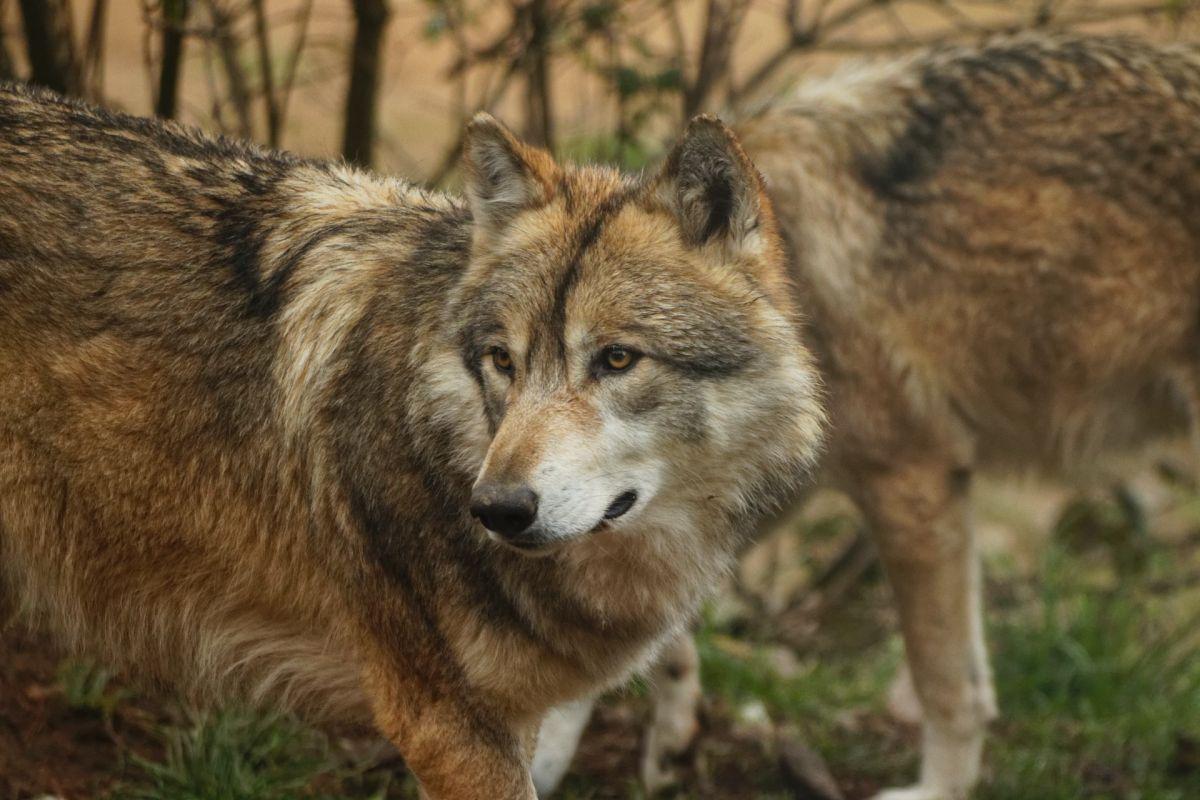
- Name : Italian wolf
- Scientific name : Canis lupus italicus
- Conservation status : Vulnerable
In order to show you the diversity of culture in Switzerland, let’s start this list off with an animal from neighboring Italy , the Italian wolf!
Also known as the Apennine wolf, it is a subspecies of the gray wolf native to the Italian Peninsula but found in areas of France and Switzerland. It has been strictly protected in Italy since the 1970s and is considered vulnerable to extinction due to illegal hunting and persecution.
2. Brown bear
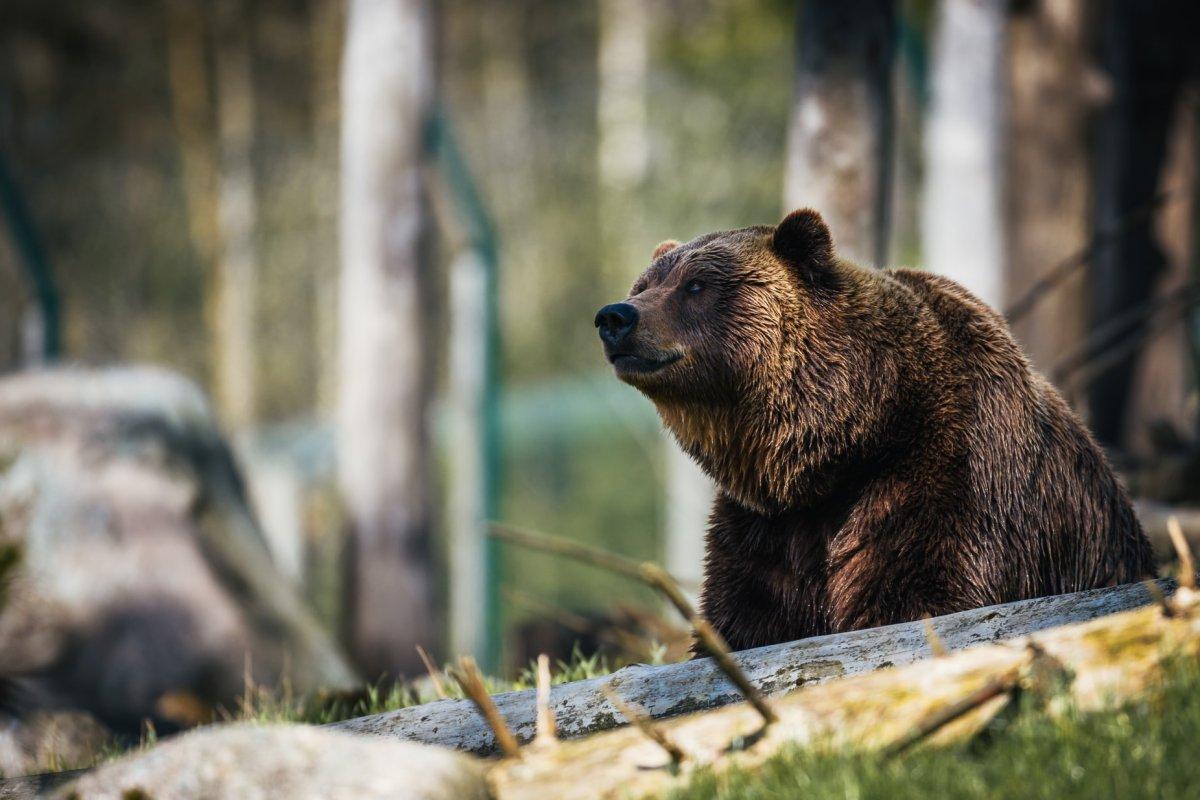
- Name : Brown bear
- Scientific name : Ursus arctos
- Conservation status : Least concern
The brown bear is a large species of bear native to most of Eurasia and North America. It is the second-largest terrestrial carnivore in the world, beaten only by its close relative, the polar bear. It is an important part of European culture and has been featured in multitudes of tales and fables.
This bear has been suffering for decades, and its range has shrunk. Despite this, its numbers remain large, and its range wide: there are about 110,000 brown bears in the world.
3. Mountain hare
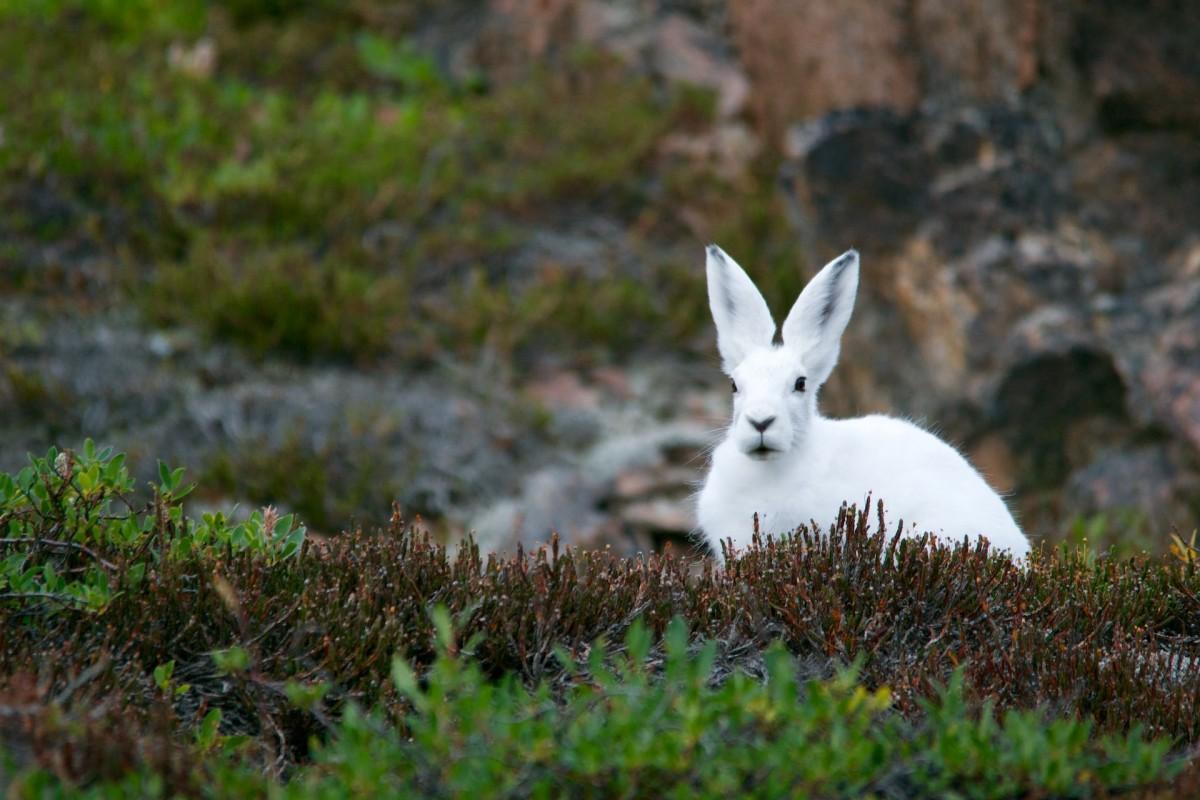
- Name : Mountain hare
- Scientific name : Lepus timidus
The mountain hare, also known as the white hare, the snow hare, the variable hare, the Irish hare, the tundra hare, the blue hare, or the alpine hare (yes, that’s a lot of names), is a species of hare native to polar and mountainous habitats. It can be found in a wide range, from central and Irish mountains to Scandinavian and Russian environments.
The color of this hare greatly varies depending on its environment, ranging from pure white in snowy places to brown and gray in Swiss mountains.
4. Alpine marmot
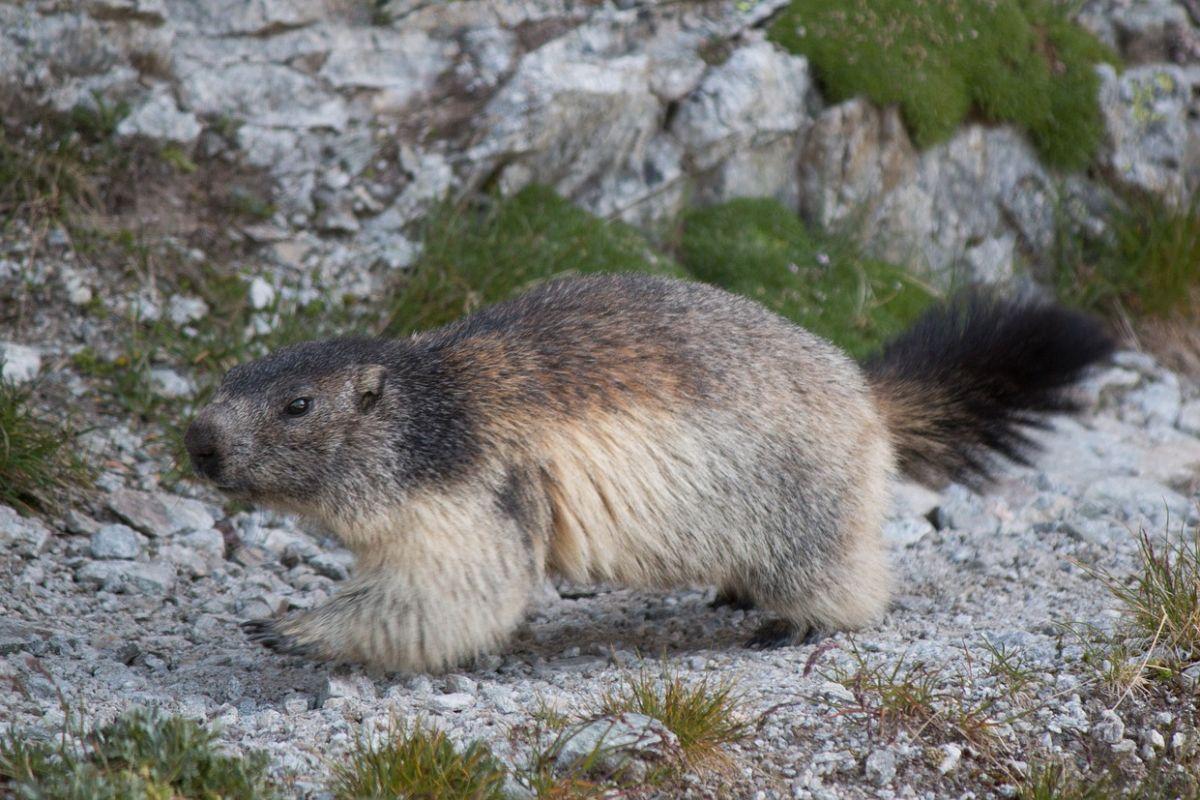
- Name : Alpine marmot
- Scientific name : Marmota marmota
The alpine marmot is one of the most recognizable Swiss animals, being present at the country’s heights. It is a large species of ground-dwelling squirrel, found at altitudes between 800 and 3,200 m / 2,600 and 10,500 ft above sea level, mainly in the Alps, the Northern Apennines, the Tatras, and the Carpathians.
This marmot feeds on herbs and grasses, but also on insects, spiders, worms, and grain.
5. Eurasian lynx
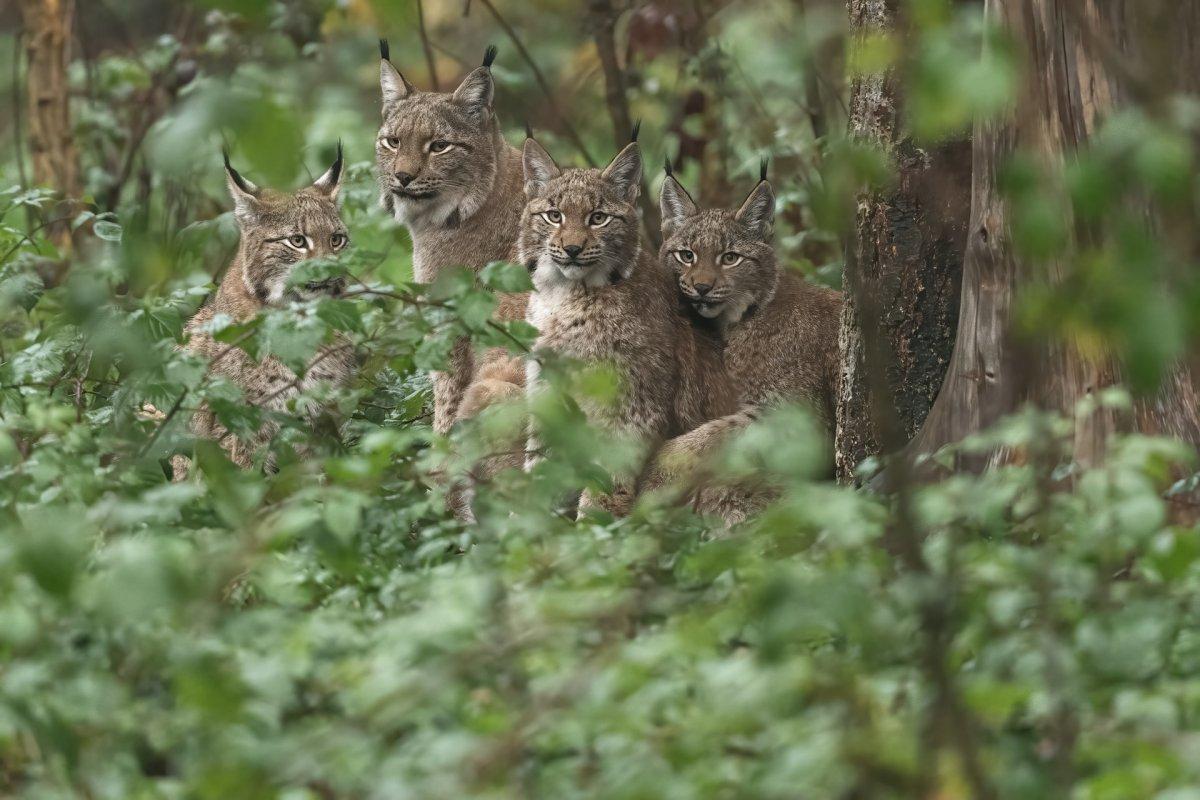
- Name : Eurasian lynx
- Scientific name : Lynx lynx
The Eurasian lynx is a medium-sized species of wild cat native to much of Europe’s mountains, but also Russia and the Himalayas. It is an elusive animal, living in the heights of Switzerland, and can be found as high as 5,500 m / 18,000 ft above sea level.
This wild cat is listed as least concern, but is seriously threatened by poaching, habitat fragmentation, and loss and depletion of prey.
6. European wildcat
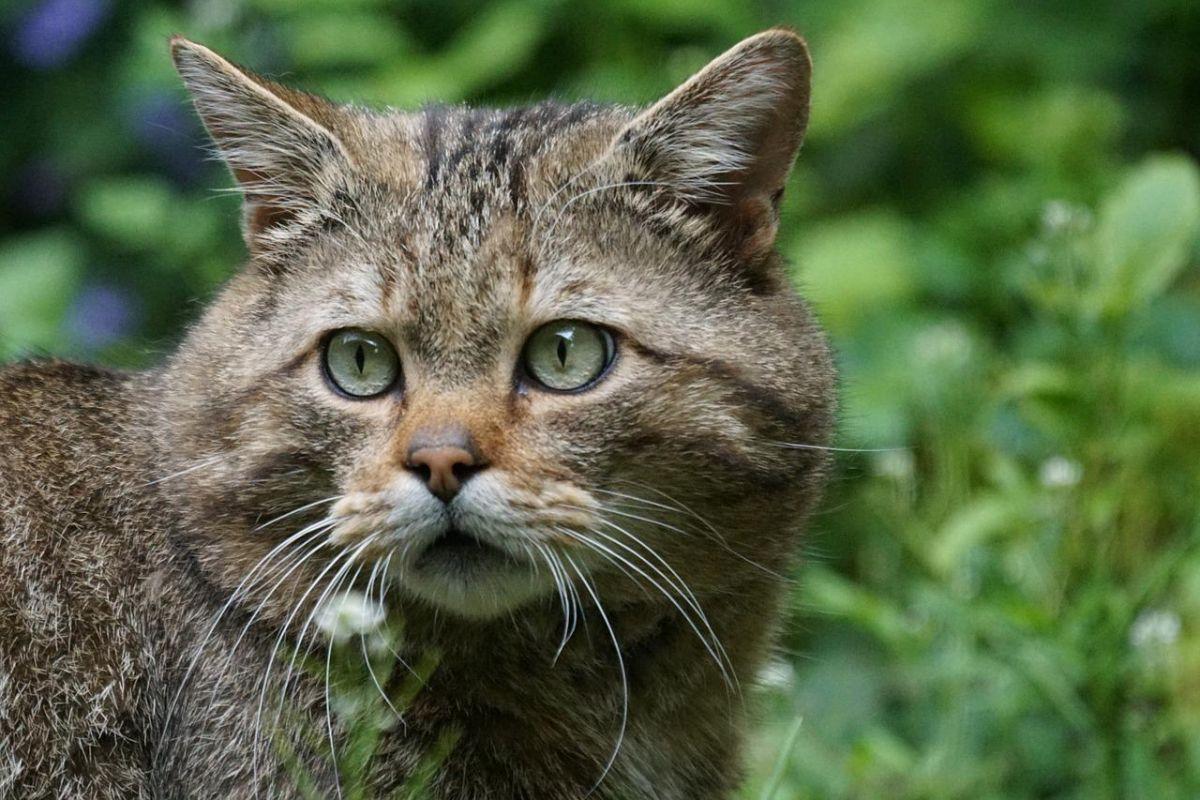
- Name : European wildcat
- Scientific name : Felis silvestris
The European wildcat is a small species of wildcat native to Europe, Turkey, Scotland , and the Caucasus. It can be found in the forests of Switzerland, mainly in the Jura Mountains, and has gray to brown fur with a black-tipped tail.
This wild cat is mostly active by night but was also spotted during the day in undisturbed areas. It is an obligate carnivore, which feeds on hamsters and other rodents, as well as fawns of red and roe deers.
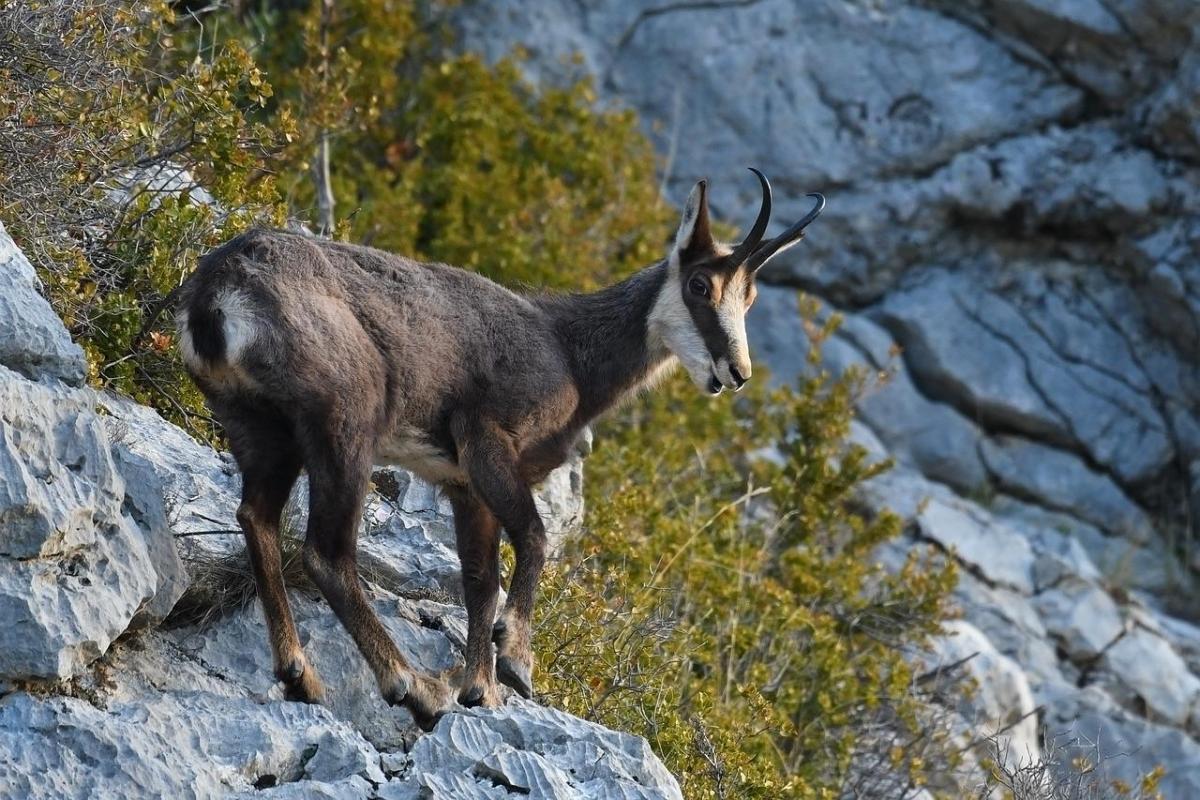
- Name : Chamois
- Scientific name : Rupicapra rupicapra
The chamois, also known as the Alpine chamois, is a species of goat antelope native to the mountains of Europe. It can be found in the Alps, the Pyrenees, the Tatras, and the Carpathian Mountains, and has been introduced to the South Island of New Zealand.
This mammal has been hunted for centuries, and some of its subspecies are on the brink of extinction and are strictly protected within Europe because of that.
8. Alpine ibex
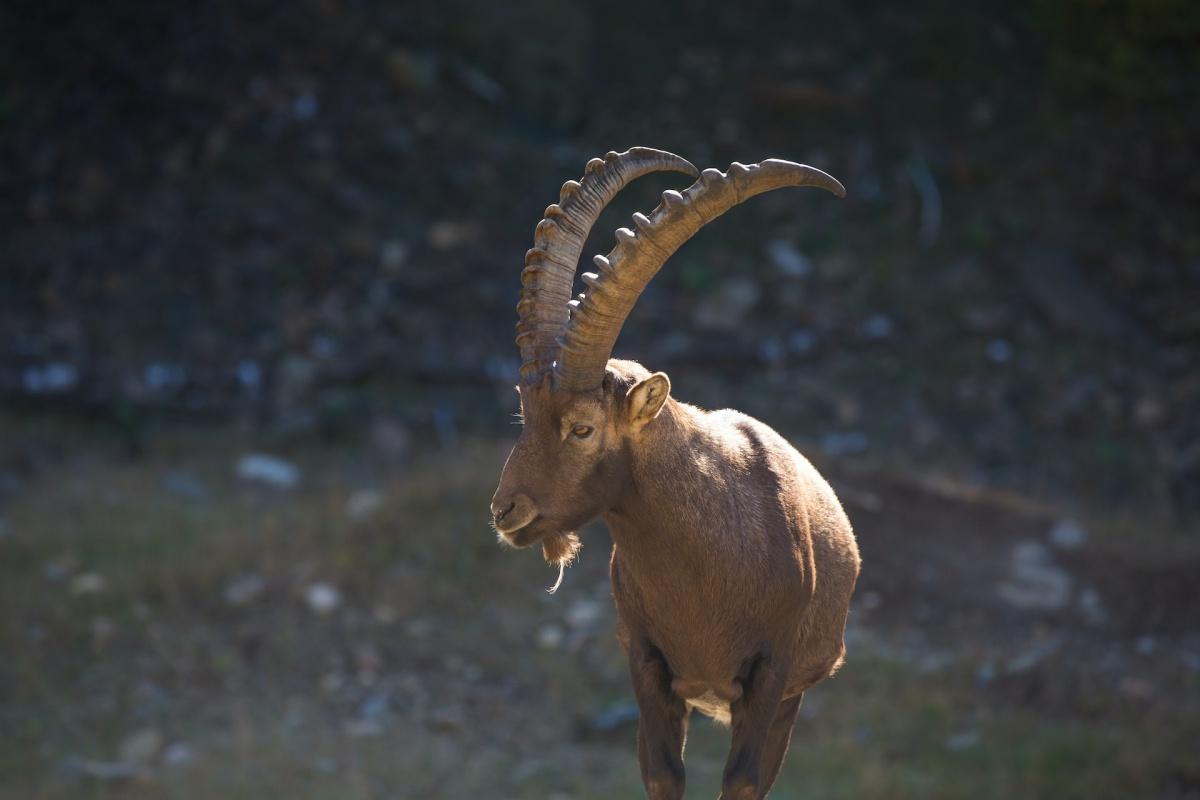
- Name : Alpine ibex
- Scientific name : Capra ibex
The Alpine ibex, also known as the bouquetin, the steinbock, or the ibex, is a species of wild goat native to the European Alps. After having disappeared from Switzerland, it has been reintroduced to the country. Now considered of least concern, it survived a period with fewer than 100 individuals worldwide.
This goat has very long, characteristic horns that curve backward. During the mating season, males compete for females and use their horns to fight each other.
9. Eurasian otter
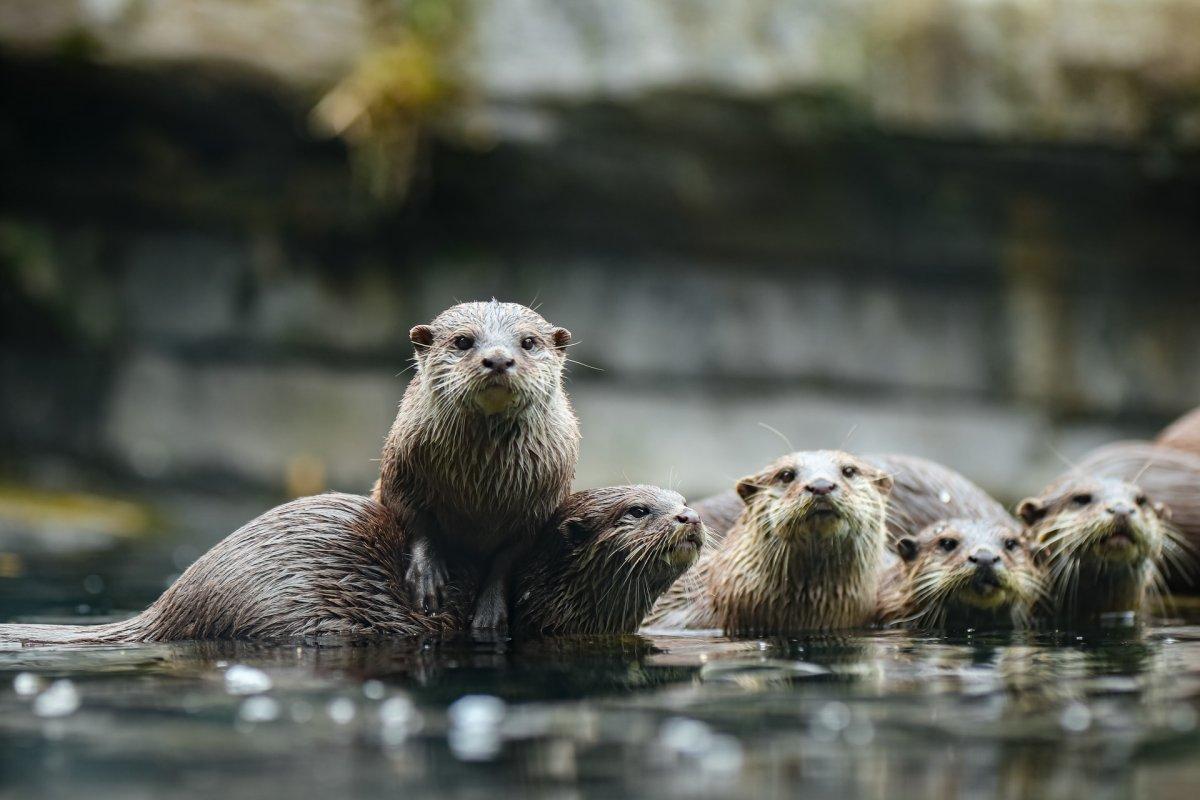
- Name : Eurasian otter
- Scientific name : Lutra lutra
- Conservation status : Near threatened
Similarly to the Alpine ibex, the Eurasian otter has been reintroduced to Switzerland. Also known as the European otter, the Old World otter, the common otter, or the river otter, it is a species of semi-aquatic mammal native to the vast majority of Eurasia, as far east as the Russian Far East .
Although officially reintroduced to Switzerland, its numbers are so low that it might be locally extinct once more, just like in neighboring Liechtenstein.
10. Greater spotted eagle
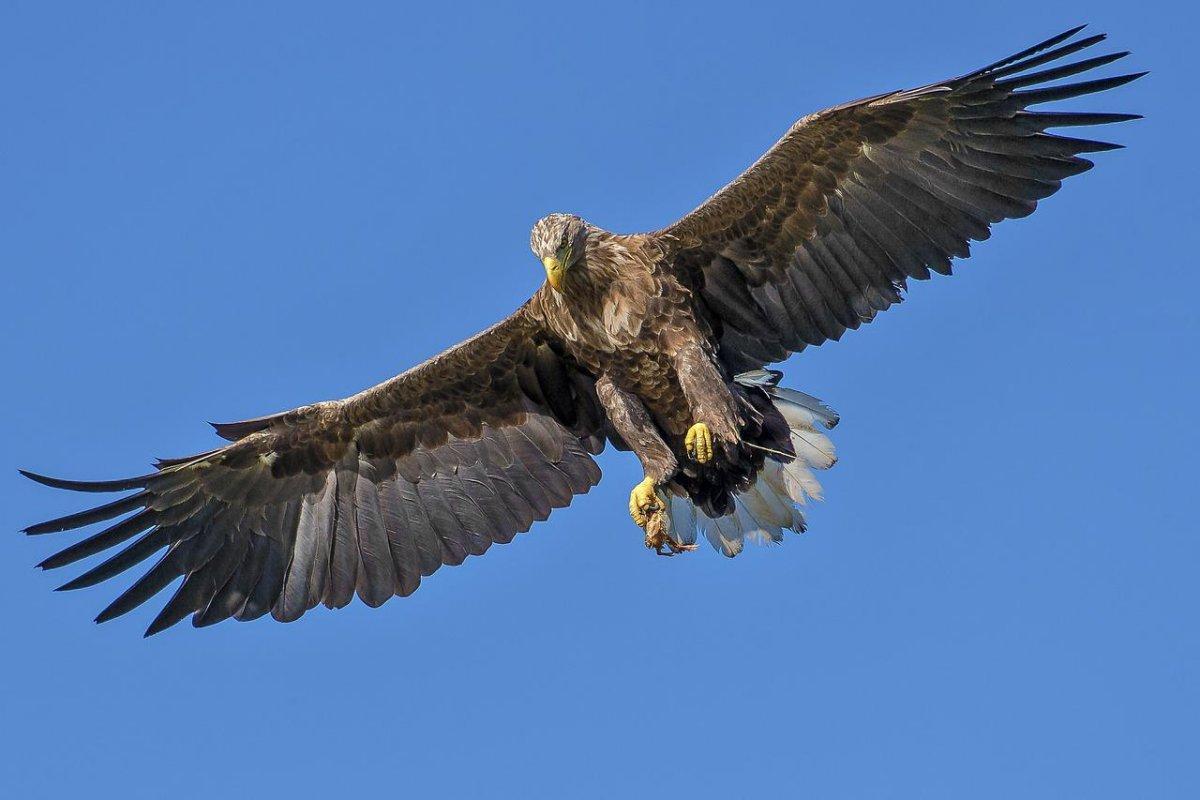
- Name : Greater spotted eagle
- Scientific name : Clanga clanga
The greater spotted eagle, also simply known as the spotted eagle, is a large species of bird of prey found in some parts of mountainous Europe, as well as Russia, and wintering in Africa, the Arabian Peninsula, the Indian subcontinent, and Southeast Asia.
This eagle lives in wetter habitats compared to others, usually near lakes, ponds, or bogs. It primarily feeds on small mammals such as rodents, but also water birds, insects, and reptiles occasionally.
11. Roe deer
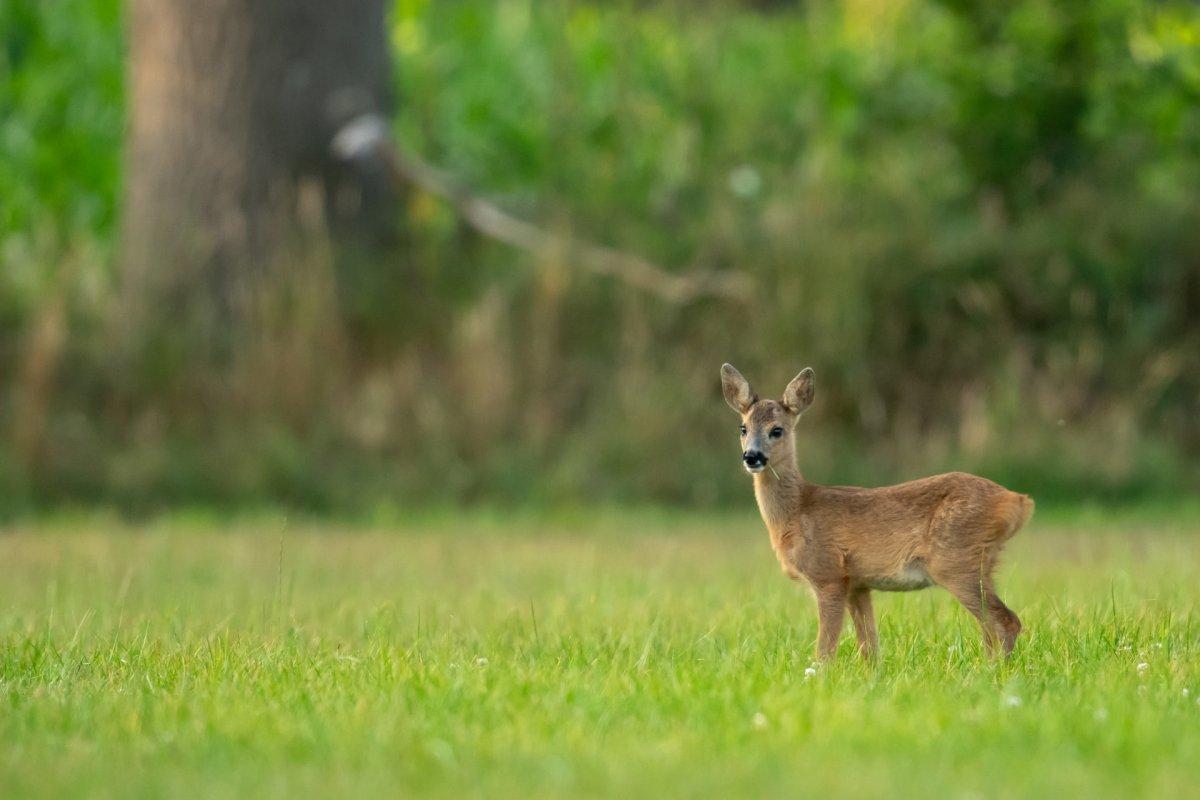
- Name : Roe deer
- Scientific name : Capreolus capreolus
The roe deer, also known as the European roe, the western roedeer, or simply the roe, is a species of deer native to almost the entirety of Europe, except for some insular regions such as Ireland, Sardinia, and Corsica.
This deer can survive in a wide range of habitats, from open agricultural lands to woodlands and forests. Usually, it spends the day hiding in dense cover and emerges at night to feed on herbs and grasses.
12. Wild boar
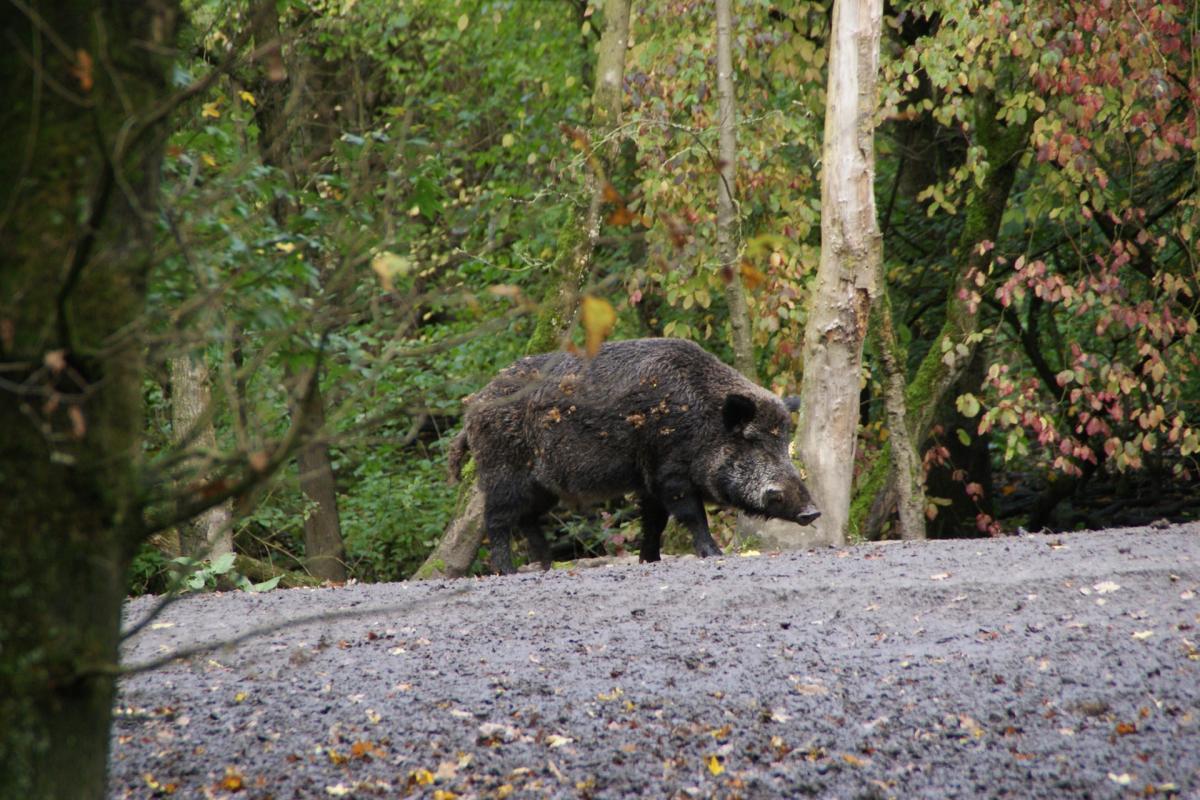
- Name : Wild boar
- Scientific name : Sus scrofa
The wild boar, also known as the Eurasian wild pig, the common wild pig, the wild swine, or simply the wild pig, is one of the most common and widespread animals in Europe. It has been hunted for thousands of years and is particularly important to Germanic and Celtic cultures.
This mammal is one of the most wide-ranging animals on the planet, being found in almost any continent, in a wide variety of forms and subspecies.
13. Beech marten
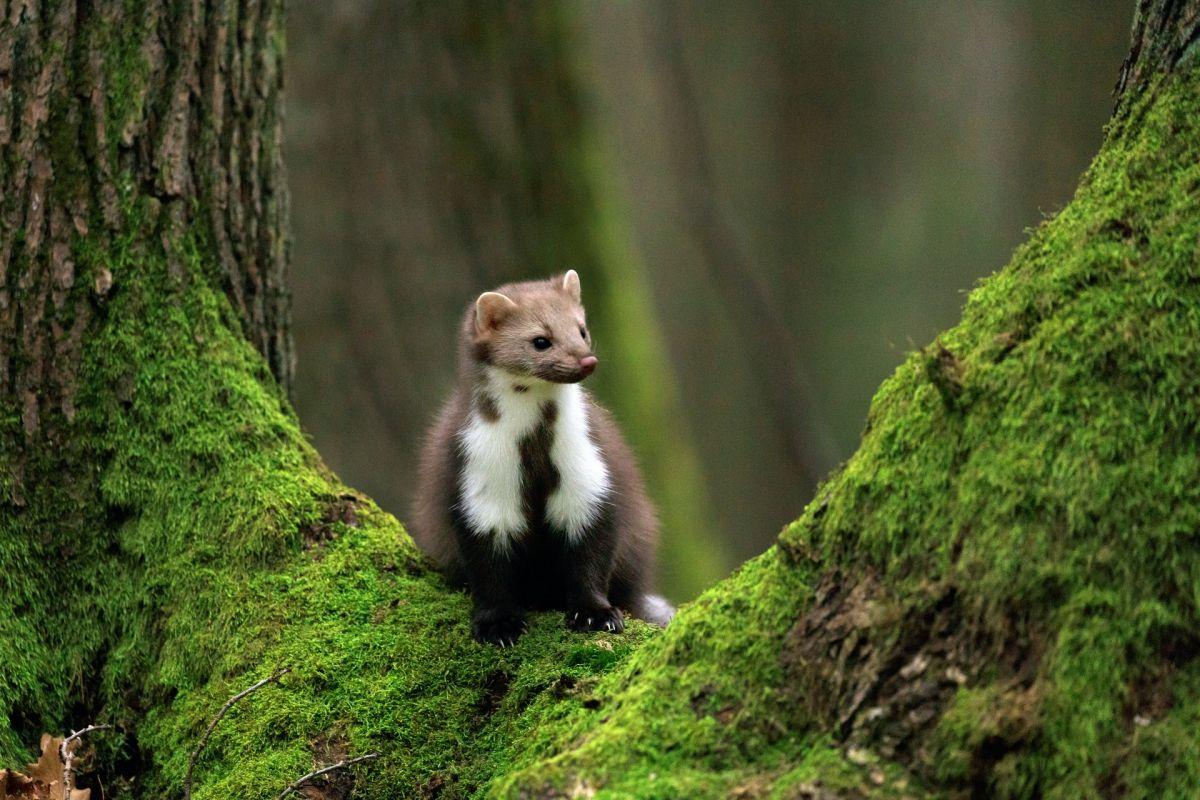
- Name : Beech marten
- Scientific name : Martes foina
The beech marten, also known as the white-breasted marten, the house marten, or the stone marten, is a species of marten native to Europe and Central Asia and has been introduced to North America. Thanks to its presence in protected areas, as well as its large numbers and very wide distribution, it is considered of least concern.
Opposite to the pine marten, the beech marten is less specialized and can inhabit a wide range of environments, including forests and open habitats.
14. Red fox
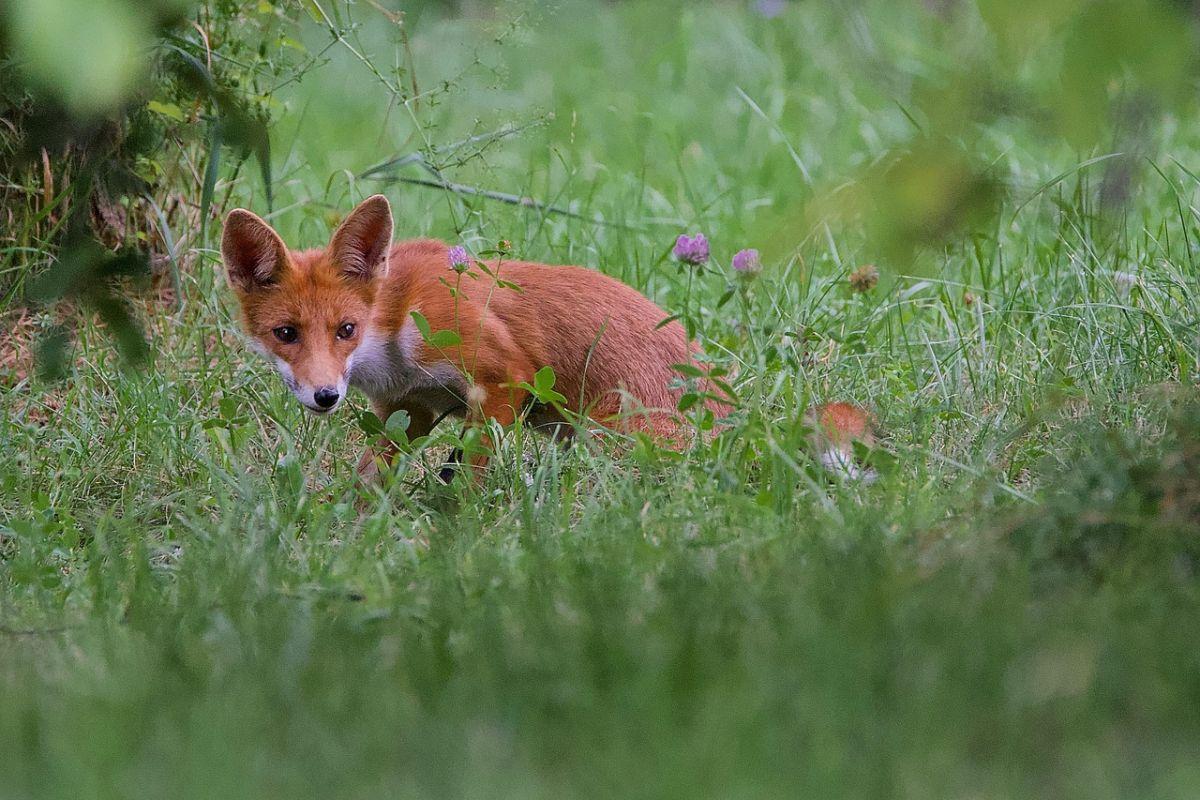
- Name : Red fox
- Scientific name : Vulpes vulpes
The red fox is the largest species of true fox and one of the most common and well-known animals in Europe. In fact, it is also one of the most successful species on the planet, being found almost everywhere, and expanding its range alongside humans’.
It has only been present in Zürich, Switzerland since the 1980s, and there are around 35,000 individuals in the country alone.
15. Greater noctule bat
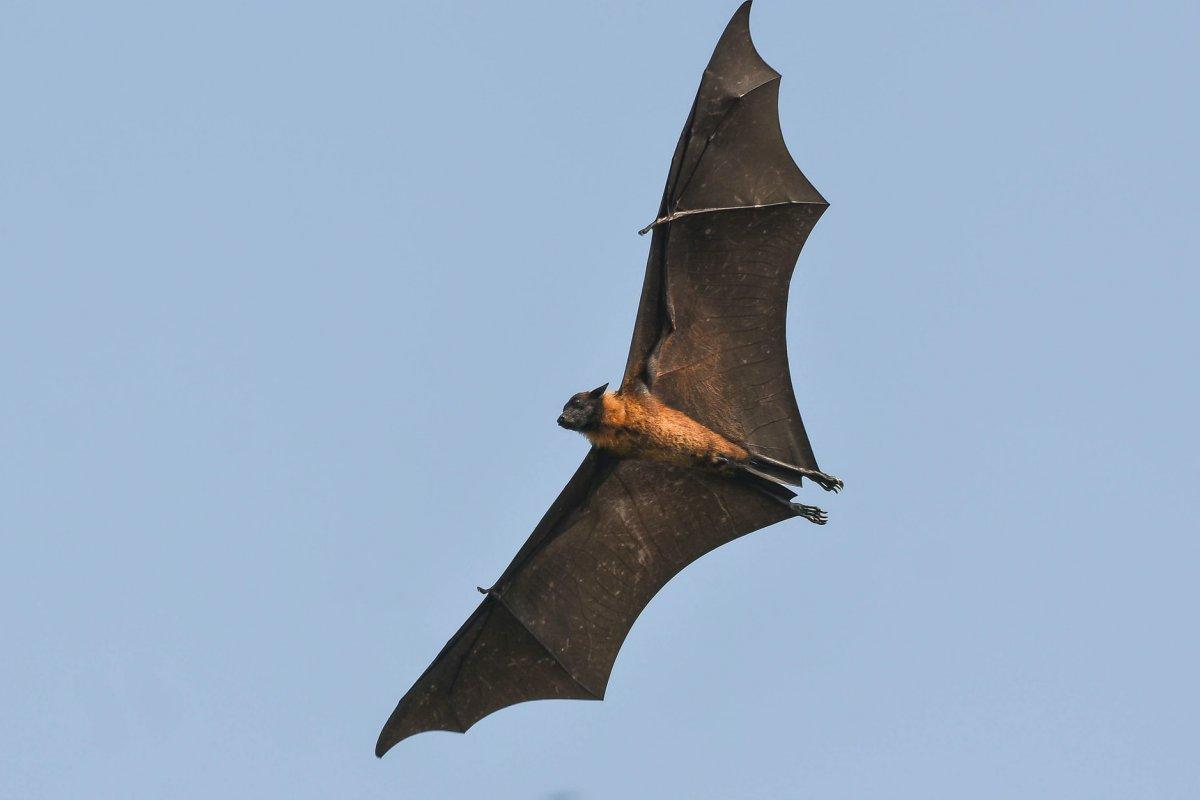
- Name : Greater noctule bat
- Scientific name : Nyctalus lasiopterus
The greater noctule bat is a species of bat native to Europe, western Asia, and northern Africa. It is the least studied bat in Europe, but also the largest, reaching impressive wingspans of up to 46 cm / 18 in.
Unlike most bats in the world, the greater noctule bat is not insectivorous, but carnivorous. It primarily feeds on birds and uses echolocation above the hearing range of its prey to find and kill them.
16. European mole
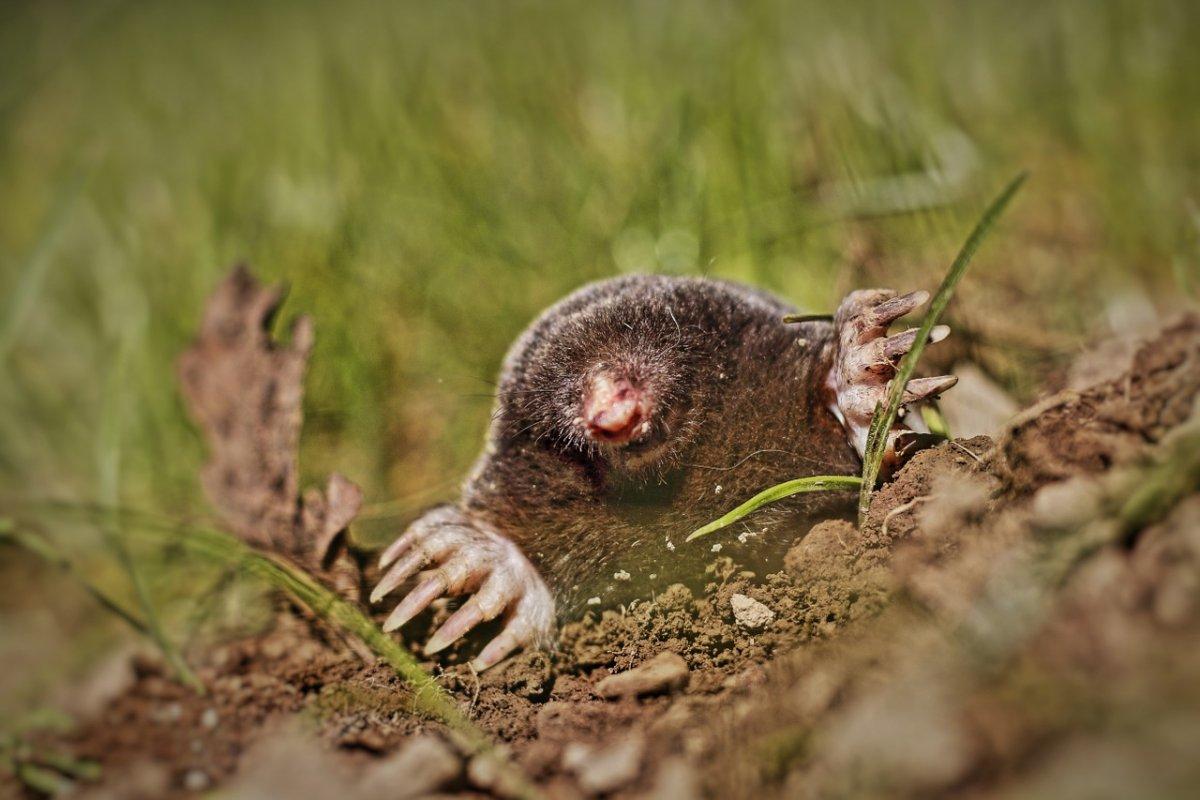
- Name : European mole
- Scientific name : Talpa europaea
The European mole, also known as the northern mole or the common mole, is a species of mole native to much of Europe and into European Russia. It is known for living in a constantly-expanding tunnel system and leaving displaced earth at the surface of the ground, which is the characteristic molehills.
This mammal has toxins in its saliva, which is used to paralyze earthworms, the main part of its diet.
17. European badger
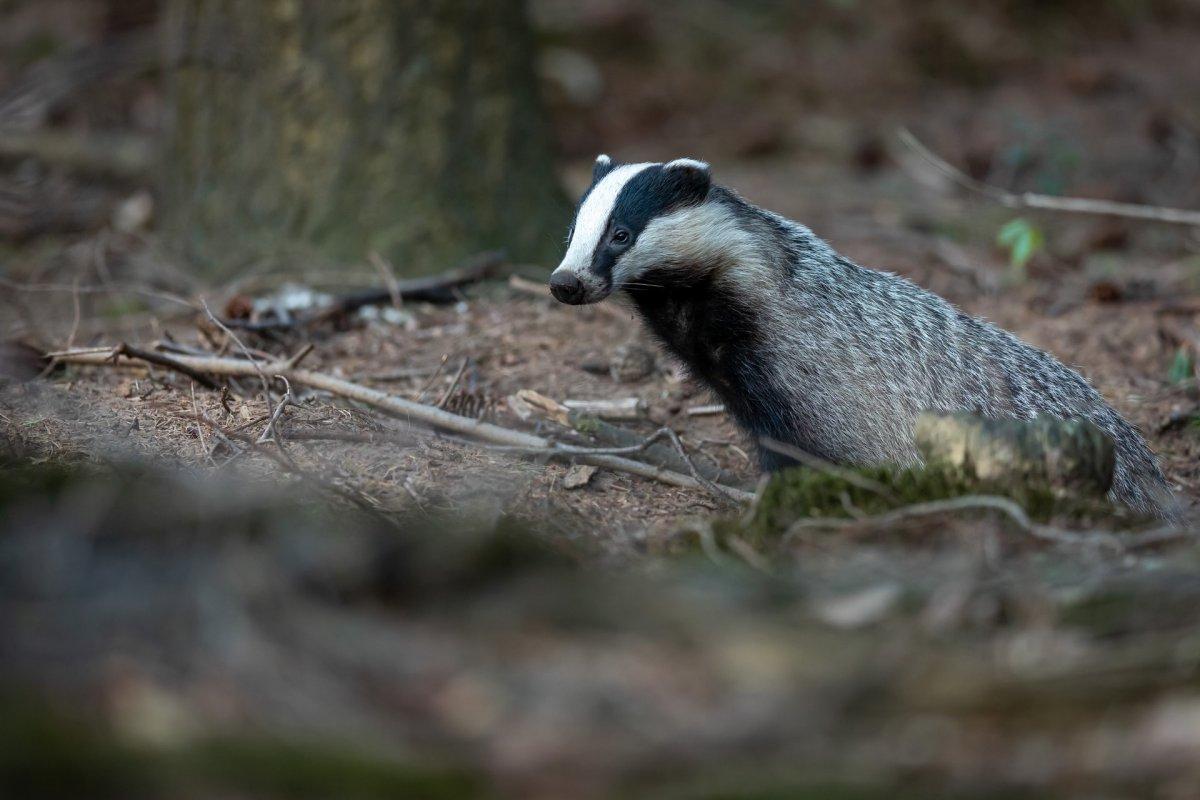
- Name : European badger
- Scientific name : Meles meles
The European badger is a species of mustelid native to all of Europe, except for several insular territories and northernmost Scandinavia. It is known for its characteristic gray, black and white fur and its surprising ferociousness and strength, mainly when it comes to defending its territory.
One of the major mortality factors amongst European badgers is bovine tuberculosis. It was first observed in 1951 in Switzerland, and individuals can survive and breed for years, although they are infected.
18. Bearded vulture
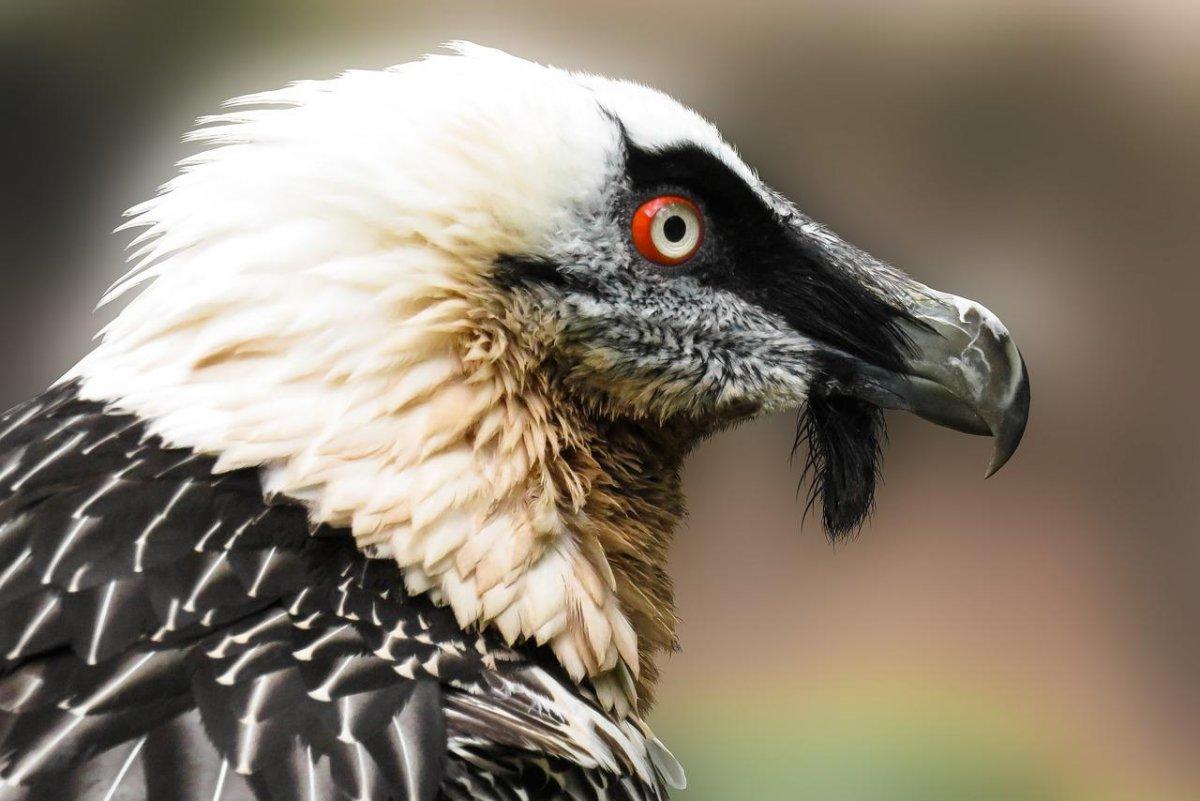
- Name : Bearded vulture
- Scientific name : Gypaetus barbatus
The bearded vulture, also known as the ossifrage or the lammergeier, is a very large species of bird of prey native to several areas of Europe, Africa, and Asia.
It is unique in the sense that it almost exclusively feeds on bone marrow ( the only known vertebrate to do that ): to crack open the bones of the carrion it finds, it usually drops them onto rocks from a decent height.
19. Long-eared owl
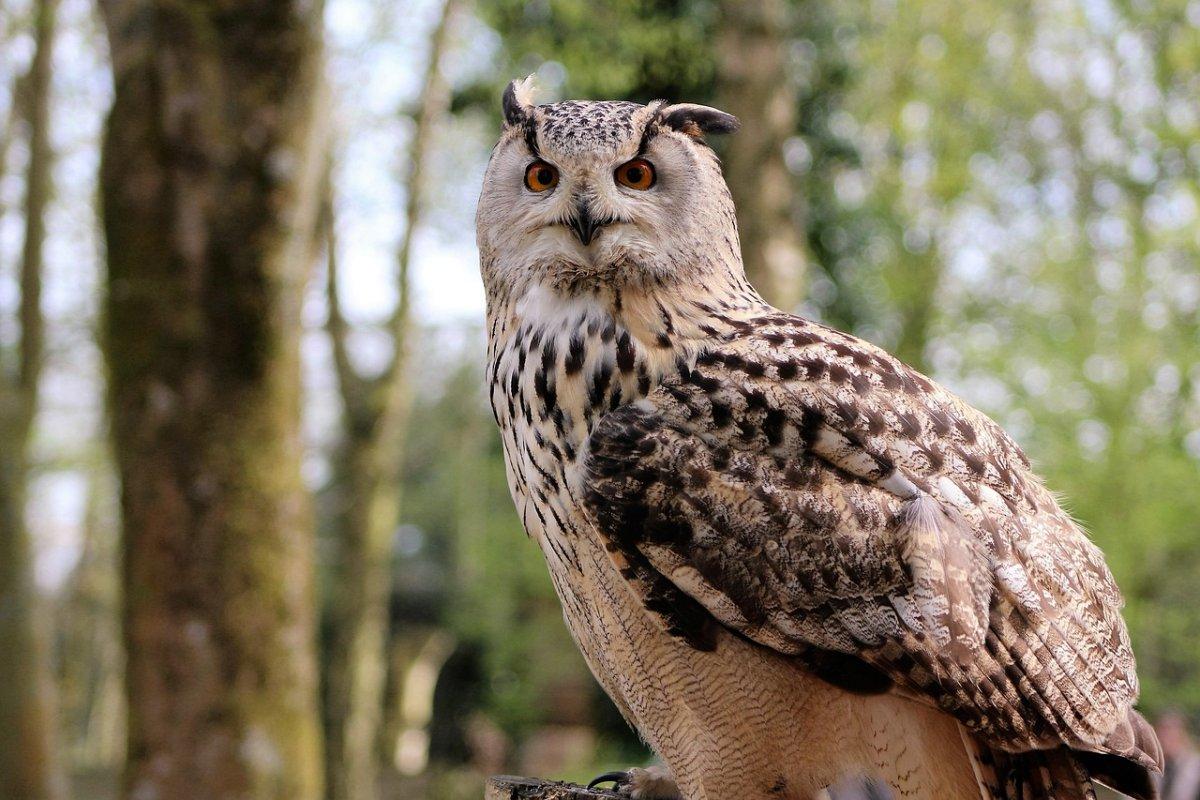
- Name : Long-eared owl
- Scientific name : Asio otus
The long-eared owl, also known as the cat owl, the lesser horned owl, or the northern long-eared owl, is a medium-sized species of owl native to much of the Northern Hemisphere, in both Eurasia and North America.
It populates the semi-open habitats of Switzerland, mainly woodland edge, and it roosts and nests in densely wooded areas. When it comes to feeding, it almost exclusively hunts for small rodents, mainly voles.
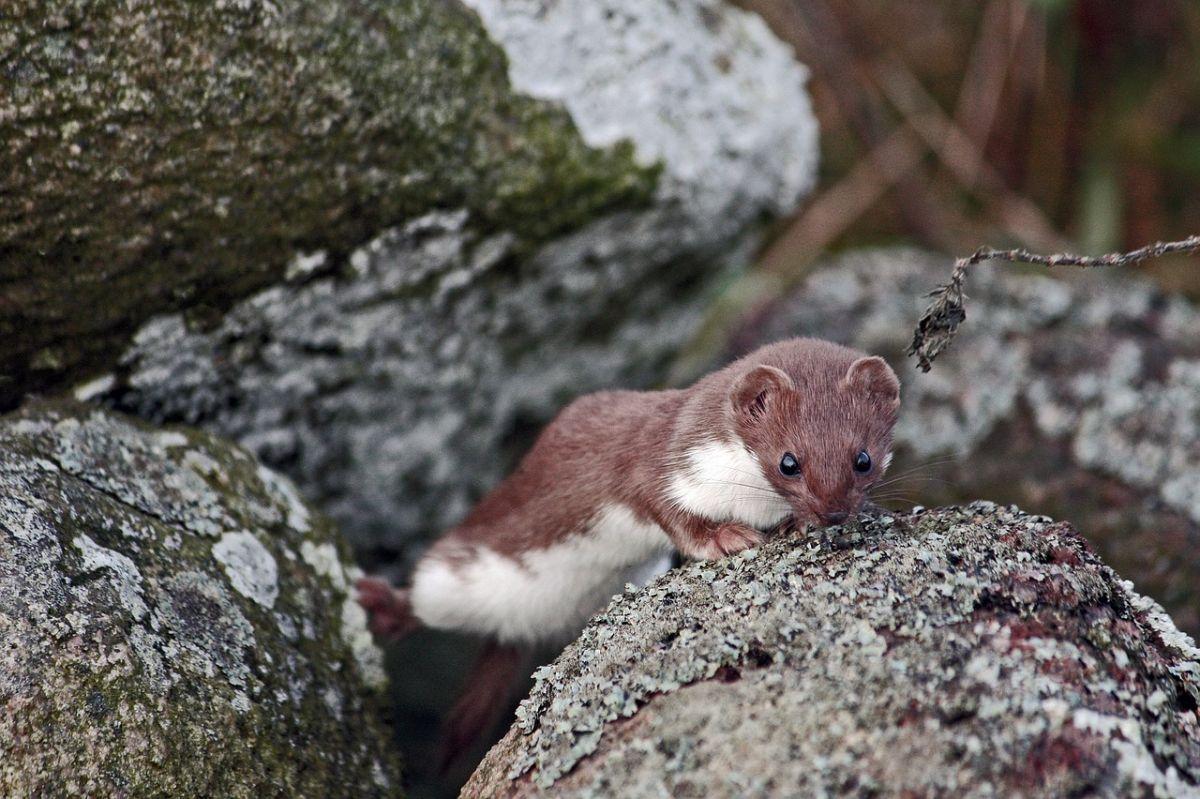
- Name : Stoat
- Scientific name : Mustela erminea
The stoat, also known as the Beringian ermine, the Eurasian ermine, or simply the ermine, is a species of mustelid native to Eurasia and the northern parts of North America. It is considered of least concern since it can be found all around the Northern Hemisphere.
There is a national subspecies of the stoat in Switzerland, known as the Swiss stoat (Mustela erminea minima). It was first described by Cabazza in 1912.
21. Common crane
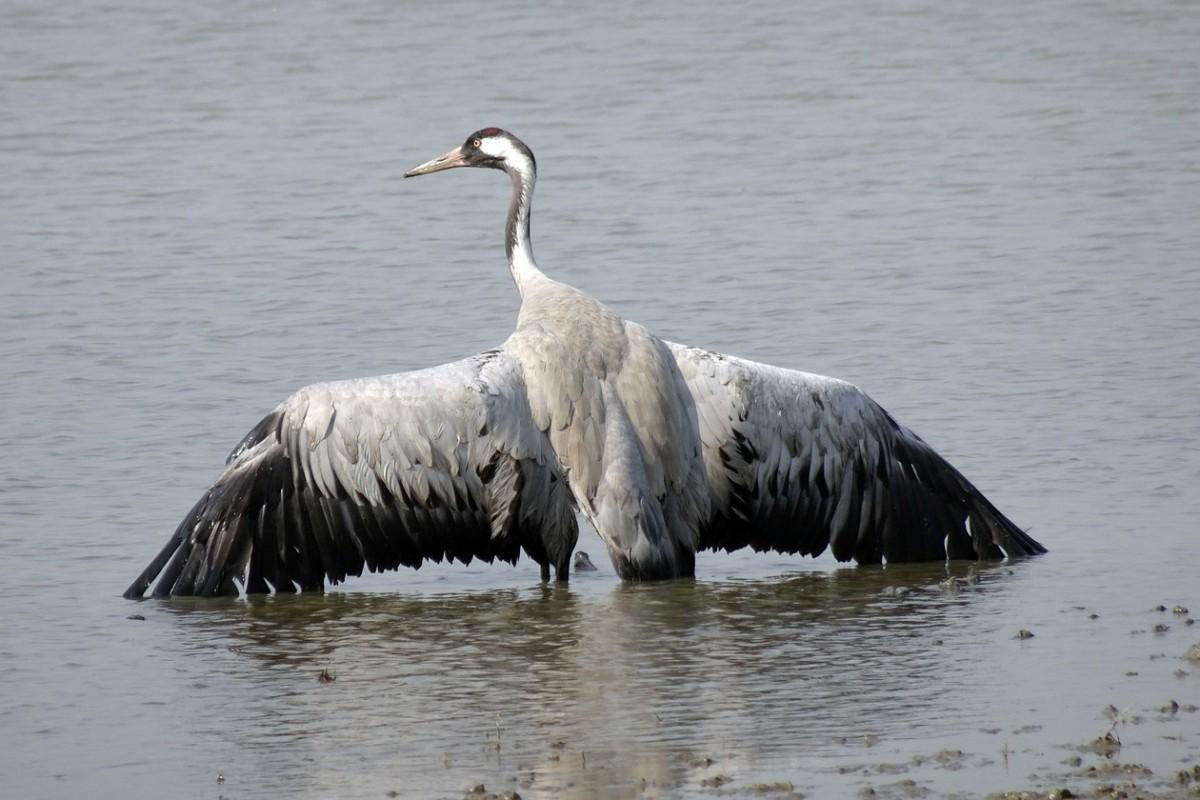
- Name : Common crane
- Scientific name : Grus grus
The common crane, also known as the Eurasian crane, is a medium-sized species of crane native to Eurasia. It is a migratory bird, spending the winter in sub-Saharan Africa, the Indian subcontinent, Southeast Asia, and the Arabian Peninsula.
This crane mainly lives in taiga and boreal forests, from sea level to up to 2,200 m / 7,200 ft above it. It is omnivorous, just like other cranes, and feeds on plant matter such as fruits, seeds, and roots, but also animal resources such as dragonflies, snails, spiders, and earthworms.
So there you have them, these were my 21 wild animals found in Switzerland. I hope you enjoyed this list and that you learned something new today.
In case you want to learn more about animals in the country, feel free to keep reading, as I still have lots of things to tell you about:
This is definitely the saddest part of the list, but it is very important to raise awareness. Because of this, let’s go through the list of endangered animals in Switzerland.
Here are the animals in danger of extinction in Switzerland.
Extinct in the wild
- Salvelinus neocomensis
- Coregonus gutturosus
- Coregonus restrictus
- Salvelinus profundus
- Coregonus fera
- and 1more…
Critically endangered
- Common hamster
- European eel
- European mink
- Slender-billed curlew
- Sociable lapwing
- and 1 more…
- European rabbit
- Northern bald ibis
- White-headed duck
- Italian nase
- Insubrian barbel
To see the full list of endangered species in Switzerland, head over to the International Union for Conservation of Nature’s Red List .
Switzerland national animal is the cow… or the St. Bernard dog.
In fact, there is no official national animal in Switzerland. However, 2 animals could claim this title.
Cows are a major part of Switzerland’s landscape and are found everywhere. They are widely appreciated by Swiss people for providing them with cheese and chocolate. There is a cow parade every autumn in the country, and 350,000 animals come down from the mountains to celebrate with floral crowns and fancy bells.
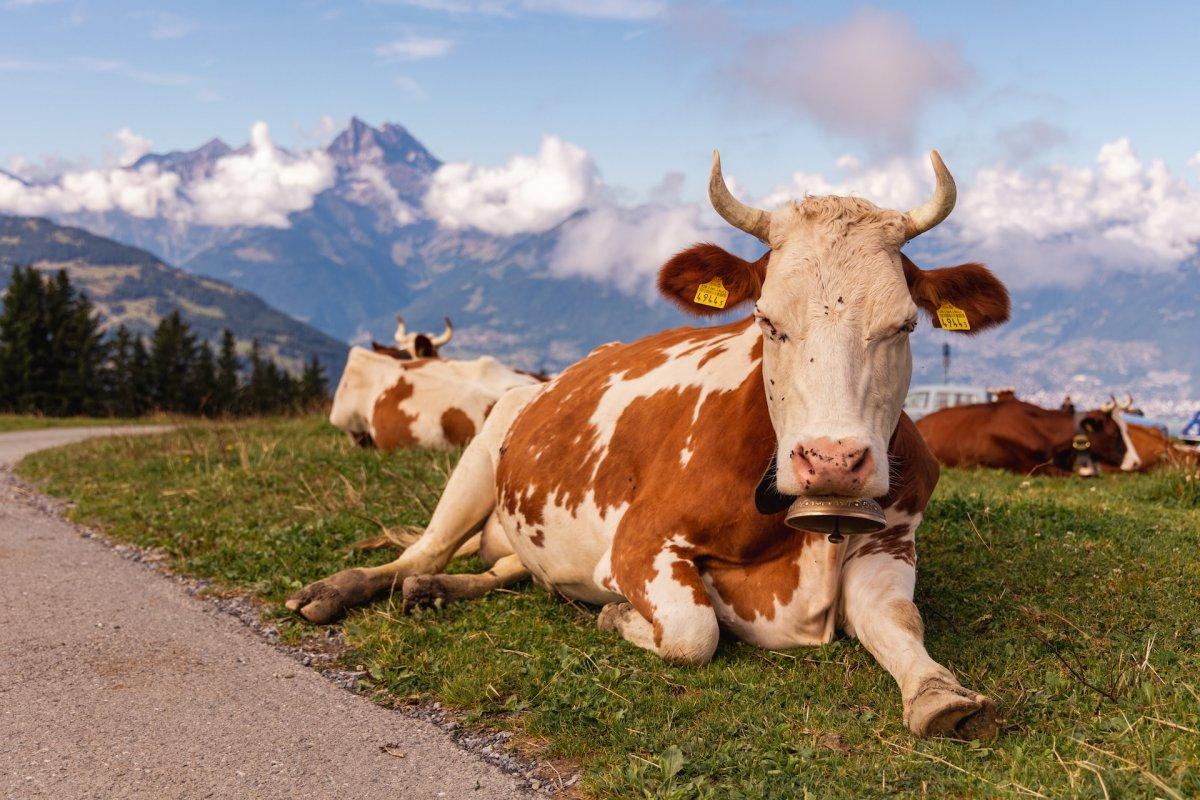
Saint Bernard dogs are an official Swiss dog breed. They are renowned for their help and are used to save lost people at the heights of the mountains. They are a symbol of dignity, sacrifice, and devotion.
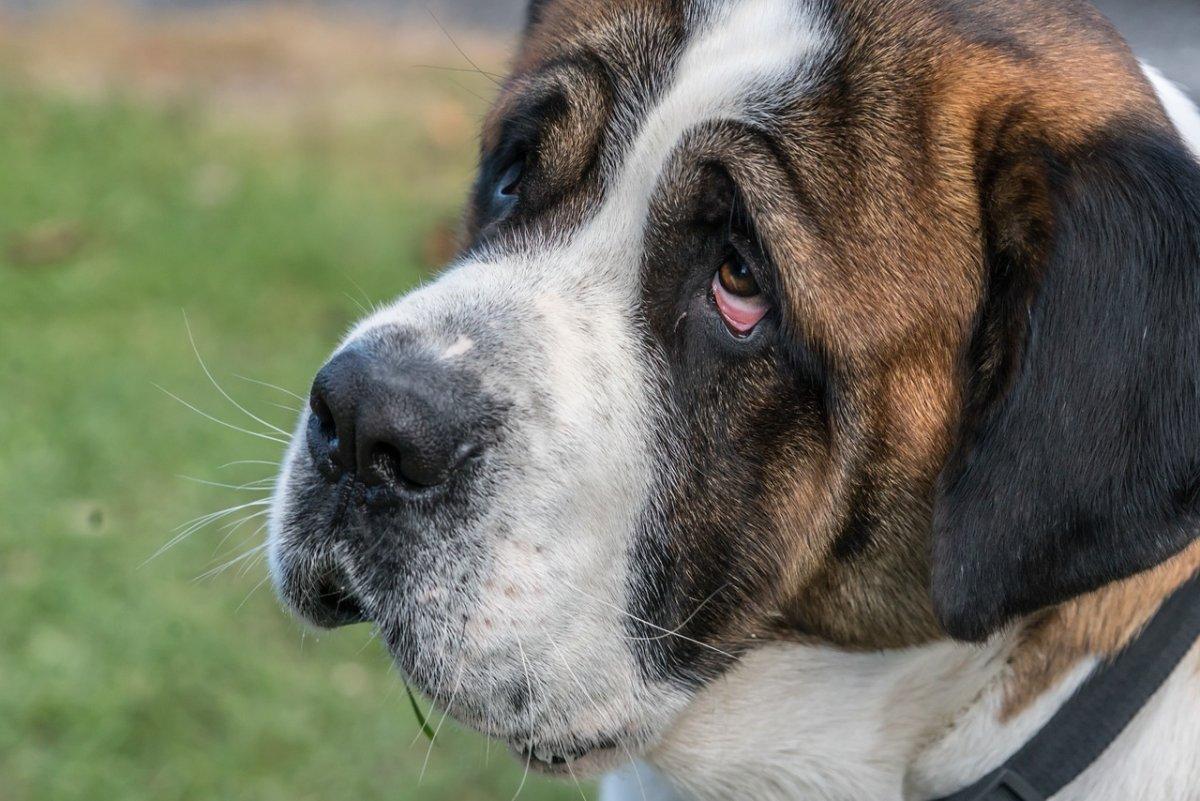
What is the diversity of native animals in Switzerland?
Let’s look at the total number of species of Chordata (mammals, birds, fishes, and reptiles).
Total number of animal species in Switzerland : 604 (3,149 in total in Europe)
Loved these Switzerland animal facts? Want to see what animals live in other countries?
Then check out these posts:
- Wild Animals in Andorra
- Wild Animals in Portugal
- Wild Animals in Spain
Or click here to see ALL the facts up on the blog! Spoiler alert: there’s A LOT of them.
Share the knowledge! Click on the buttons below to share information about these famous animals in Switzerland with your friends, and help them learn more about the world 🙂
Hey, I'm Kevin

I'm a professional photographer, with over a decade of experience in the travel industry. I worked with countless travel brands, and my travel advice has been featured in major publications such as CNN, Forbes & the New York Magazine. But the best travel advice is definitely found here on my website! I'm all about adventure travel, hiking and exploring the outdoors - even if I often find myself exploring cities with my wife Nesrine. If you have any questions, leave a comment on this post or reach out by email at: [email protected]
Come say hi on social!
Countries I've visited
Recommended Reading
![swiss travel with animals 18 Wild Animals in Kyrgyzstan [Wildlife in Kyrgyzstan]](https://www.kevmrc.com/wp-content/uploads/2022/12/18-wild-animals-in-kyrgyzstan.jpg)
Leave a Reply Cancel reply
Your email address will not be published. Required fields are marked *
Notify me when new comments are added.
We've detected unusual activity from your computer network
To continue, please click the box below to let us know you're not a robot.
Why did this happen?
Please make sure your browser supports JavaScript and cookies and that you are not blocking them from loading. For more information you can review our Terms of Service and Cookie Policy .
For inquiries related to this message please contact our support team and provide the reference ID below.

IMAGES
VIDEO
COMMENTS
Travelling to Switzerland with dogs and cats. If you fly directly to Switzerland, your pet will be checked by customs at the airport. If the animal fails to meet the entry requirements, it will be confiscated by the Border Veterinary Service and must immediately return to its country of origin. This will be at the expense of the person who ...
Frequently asked questions about travelling with animals can be found on this page, together with answers. Go to navigation; Go to main content; Go to search ... Your pet will either travel on the same aircraft as you or on a different one. Contact Swiss WorldCargo in good time at +41 44 564 5454 for further information on the booking, ...
Only available on flights operated by SWISS; Maximum dimensions of the travel carrier: max. 118 cm total size (55 x 40 x 23 cm). Maximum weight: 8 kg (incl. travel carrier) The travel carrier must be softly padded, as well as leak-proof, odour-proof and large enough that the animal can stand in its natural position, lie down and turn around.
Animals and carriers exceeding 17 lbs (8 kg) and weighing under 30 lbs (14 kg), or whose transport container is bigger than the permitted size (longer, higher or wider than 118 cm), must travel as checked baggage. The fee for this service is $92-218 for medium carriers and $184-437 for large carriers, depending on the destination of your travel.
Entering Switzerland with pets of a protected species. Approval is not required for holidays or short stays in Switzerland with an animal of a protected species provided that the animal is travelling with its owner (or a person authorised by the owner) and the owner holds a certificate of ownership. Both entry and exit must be confirmed on the ...
Before you travel outside the country with an animal from Switzerland, make sure that the conditions for re-entry are fulfilled. You are otherwise likely to be refused entry at the border. The information we provide online under " Crossing the border with dogs, cats or ferrets " lists all the entry requirements and the necessary documents.
Regulations for pets. General facts. Dogs and cats traveling to Switzerland from abroad require a vaccination certificate stating that the animal is vaccinated against rabies. The vaccination must be made at least 30 days prior to entry and should not be more than 1 year old, This also applies to dogs and cats that are returning to Switzerland ...
Must-knows about dogs on Swiss public transport. You can take along your dog on nearly all Swiss trains, buses, boats, cable cars and other mountain routes. Dogs may not be allowed in restaurant areas of boats and trains, often with exceptions for guide dogs and assistance dogs. The general rule is: small dogs with a wither height of up to 30 ...
With the Day Pass Dogs,the Monthly Dog Pass or the Yearly Dog Pass you can take your four-legged friend with you carefree. Dogs of any size travelling in passenger carriages or luggage vans must always pay second-class half fare or the stipulated minimum fare (Day Pass Dogs, Dog Pass) if there is one. Dogs must sit under your seat so that ...
Your four-legged friend is welcome to accompany you on Swiss trains. You will have to buy an additional half-fare ticket for your dog or a 1-day-travelpass for dogs. Your dog may travel with a 2nd class ticket in 1st class with you. Small dogs of up to 30 cm shoulder height in a suitable carrier travel free of charge as hand luggage.
SWISS Live Animals is the premium service for transporting live animals with utmost care and expertise. We understand the importance of ensuring the well-being and safety of your precious animals during their journey. With a team of trained experts and specialized facilities, we go above and beyond to provide a seamless and stress-free ...
The Swiss National Stud ... Even if you only book a Lama Trekk for two hours, you will learn much about these animals and about how to relate to them. Find out more about: + Adventurous Lama Trekking ; Horse and Carriage Rides in Val Bever ... Travel through the fairytale winter countryside in Val Roseg at two horsepower!
Sikypark - the Swiss animal rescue park. Sikypark rescues native and exotic animals such as tigers, wolves, lynx or parrots and gives them a home. Experience a day out for the whole family with playtimes with animals, picnic tables, a restaurant and the Siky Express. ... Swisstainable - sustainable travel in Switzerland. Untouched nature ...
The animal must travel with an EU Pet Passport issued by an authorised veterinarian (unless it has previously lived in Switzerland and been issued with a Swiss pet passport) European Pet Passport. The European Pet Passport (EU Pet Passport) allows for qualifying domestic animals (dogs, cats and ferrets) to freely cross borders in Europe. It is ...
Cats and dogs must be immunized against rabies at least 21 days prior to travel; they must be at least 90 days old at the time of immunization. Please note that the rabies vaccination for pets traveling to the EU + Switzerland must be greater than 21 days old and less than 1 year old at the time of travel. If your pet's vaccination will be over ...
Dogs and cats may travel only once they have reached the age of 12 weeks. For flights from / to USA animals must have reached the age of 16 weeks. The embargoes listed below refer to travel starting from Zurich (Switzerland). If you start your journey in another country, these guidelines may differ.
SWISS will transport in the cabin only dogs and cats weighing up to 8 kg. The maximum weight includes the transport container, which must be a soft container, clean, escape-proof, and scratch-proof. There must be enough space for the animal in the container, but its size must not exceed 55 x 40 x 23 cm. To be allowed in the cabin, the pet must ...
2. ZOO Zolli Basel. Binningerstrasse 40, 4054 Basel. A small but cosy zoo right in the heart of Basel. The main "highlight" of our visit was definitely the visit to the monkey pavilion with chimpanzees, orangutans, gorillas and other species. 3. Tierpark Langenthal. 4900 Langenthal (Schützenstrasse).
For example, the Ibex, chamois, eagle, vulture, marmot and deer are hardly going to eat you alive. However, in more recent years, some more dangerous animals have been making a comeback. Animals such as the brown bear and wolf can now be found in the alps and can be considered dangerous.
Fascinating animals - Swiss zoos and animal parks. Elephants, emus, and eagles: enjoy observing exotic and native animals in Swiss zoos and animal parks. Learn about their habitats and enjoy a wonderful time together. Click here to go to our wildly good deals. Locality, region.
Travel by train, bus or boat; Top museums; Culture; ... Located near Avenches and south of Lake Murten, the Swiss National Stud is a federal centre of competence for the management and breeding of horses. The stud welcomes members of the public for guided tours, horse-drawn carriage rides and regular events. ... Enjoy a couple of carefree hours ...
It is an elusive animal, living in the heights of Switzerland, and can be found as high as 5,500 m / 18,000 ft above sea level. This wild cat is listed as least concern, but is seriously threatened by poaching, habitat fragmentation, and loss and depletion of prey. 6. European wildcat. Name: European wildcat.
The scion of the billionaire Hinduja family rejected allegations he overworked an Indian nanny at his Swiss villa, saying it would've been idiotic to do so when she was like a "second mum ...
The variety of wild animals in Switzerland reflects the diversity of its landscapes. Watch ibexes, bearded vultures or beavers in their natural habitat, accompanied by professional guides. There are more than 80 one-day packages for you to choose from. You can also learn more about Switzerland's major animal species and how to behave when watching wildlife.